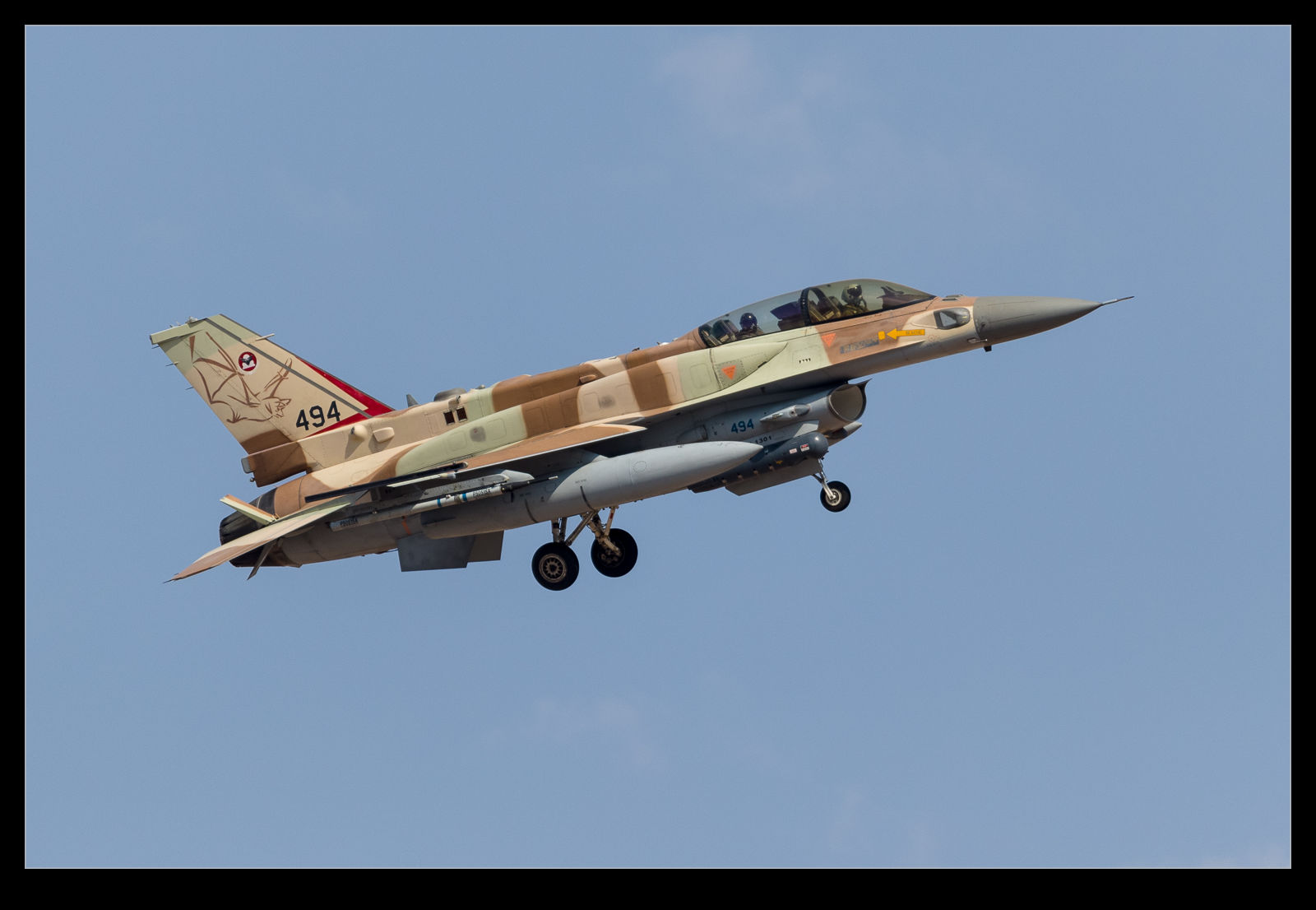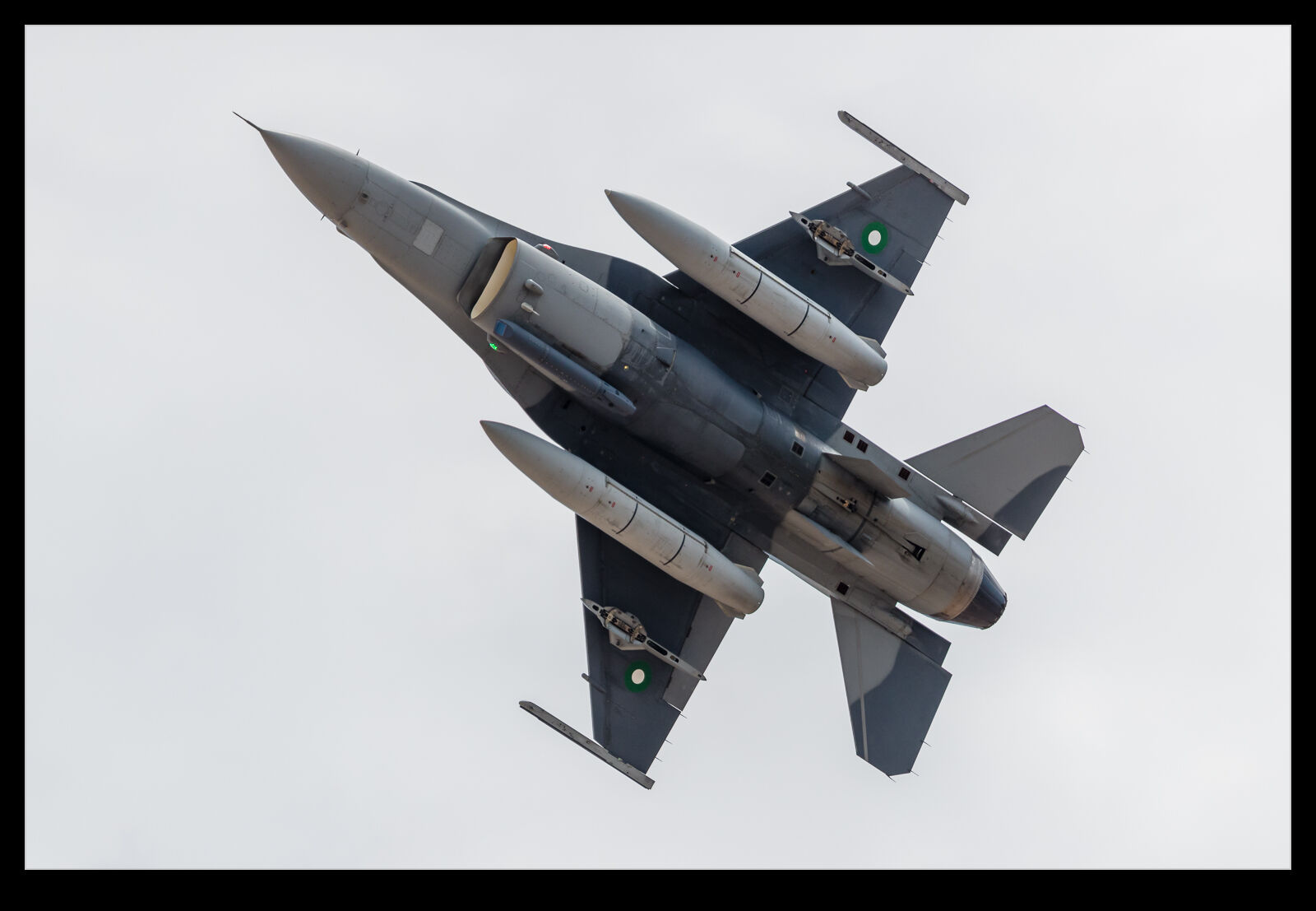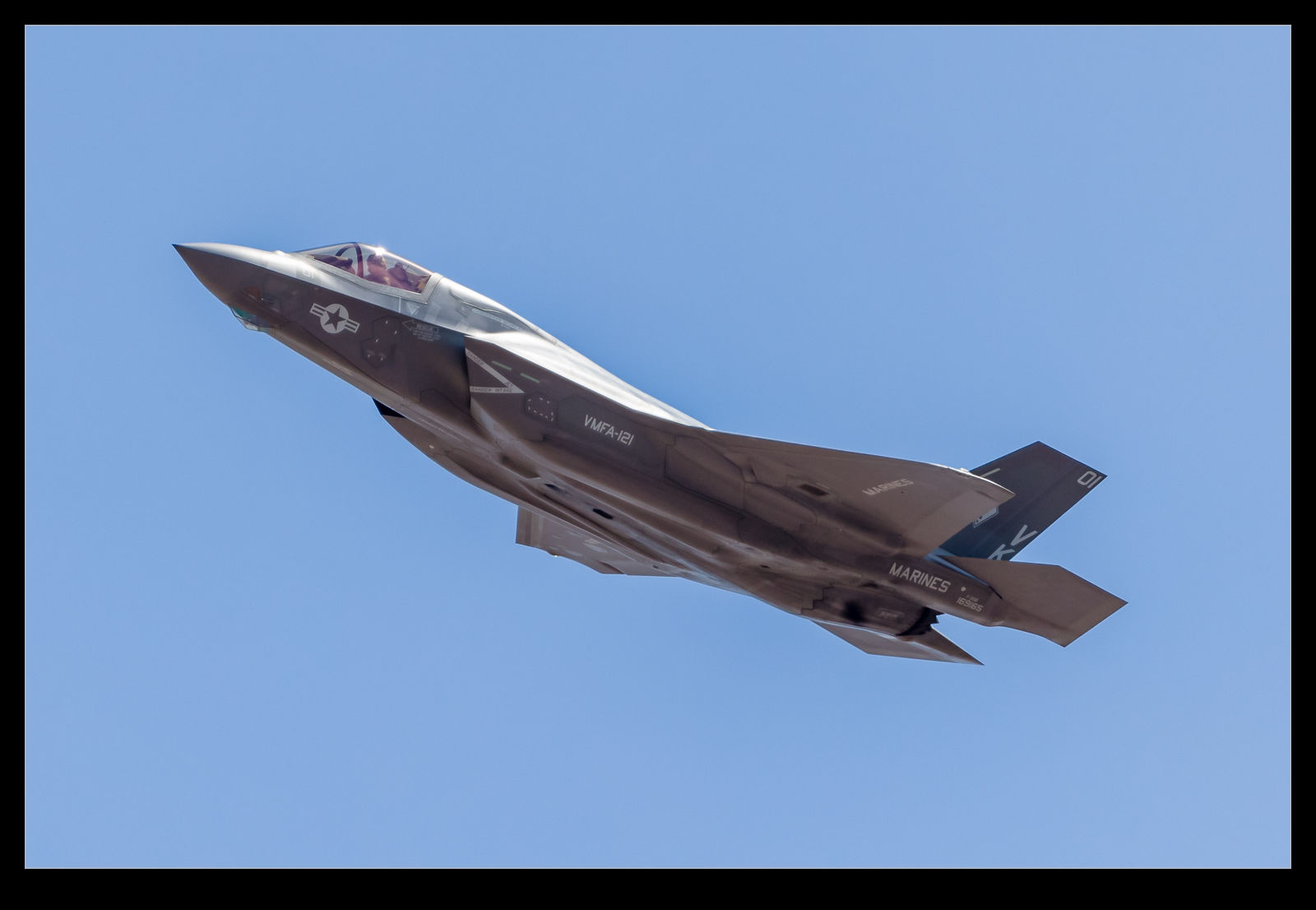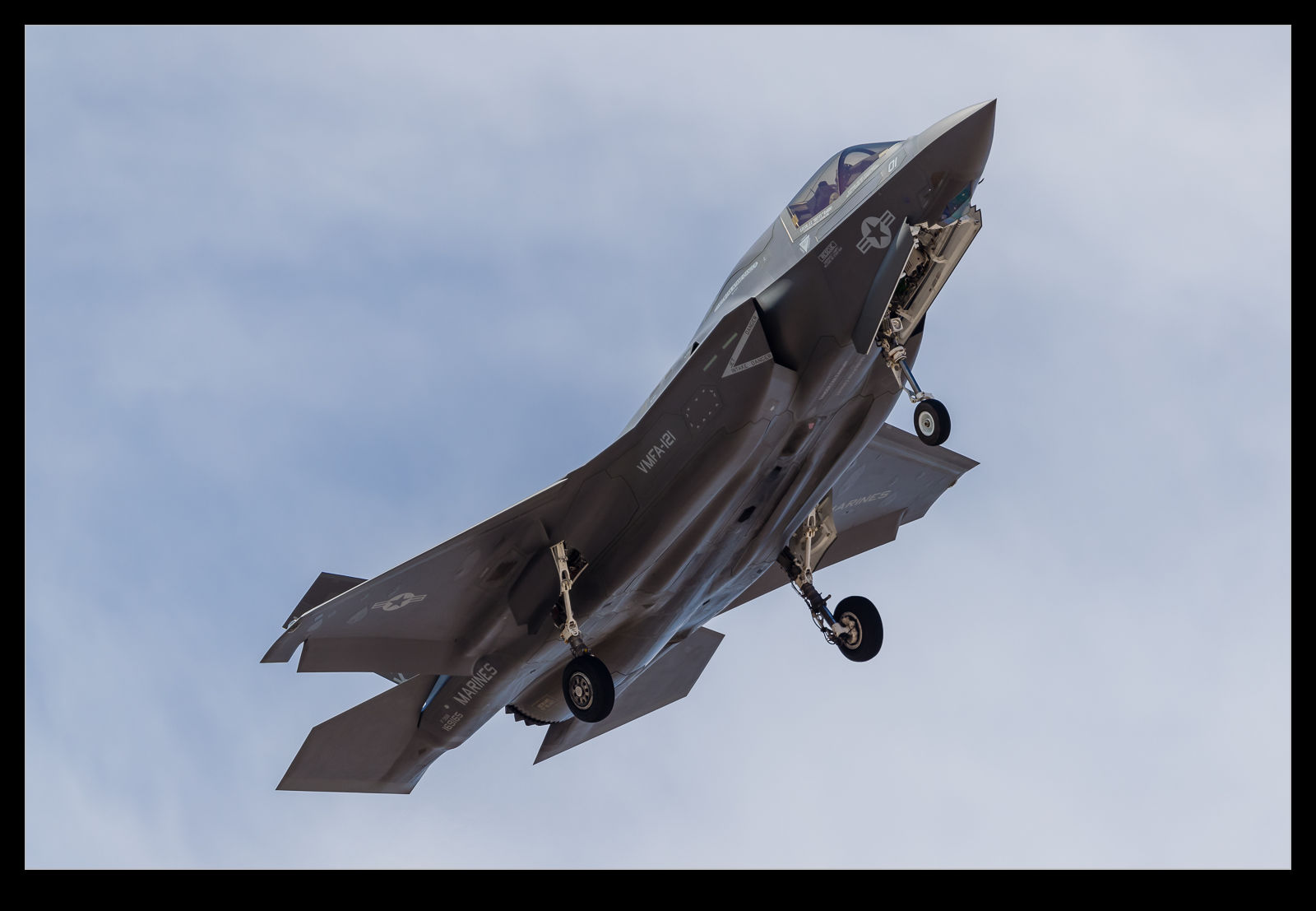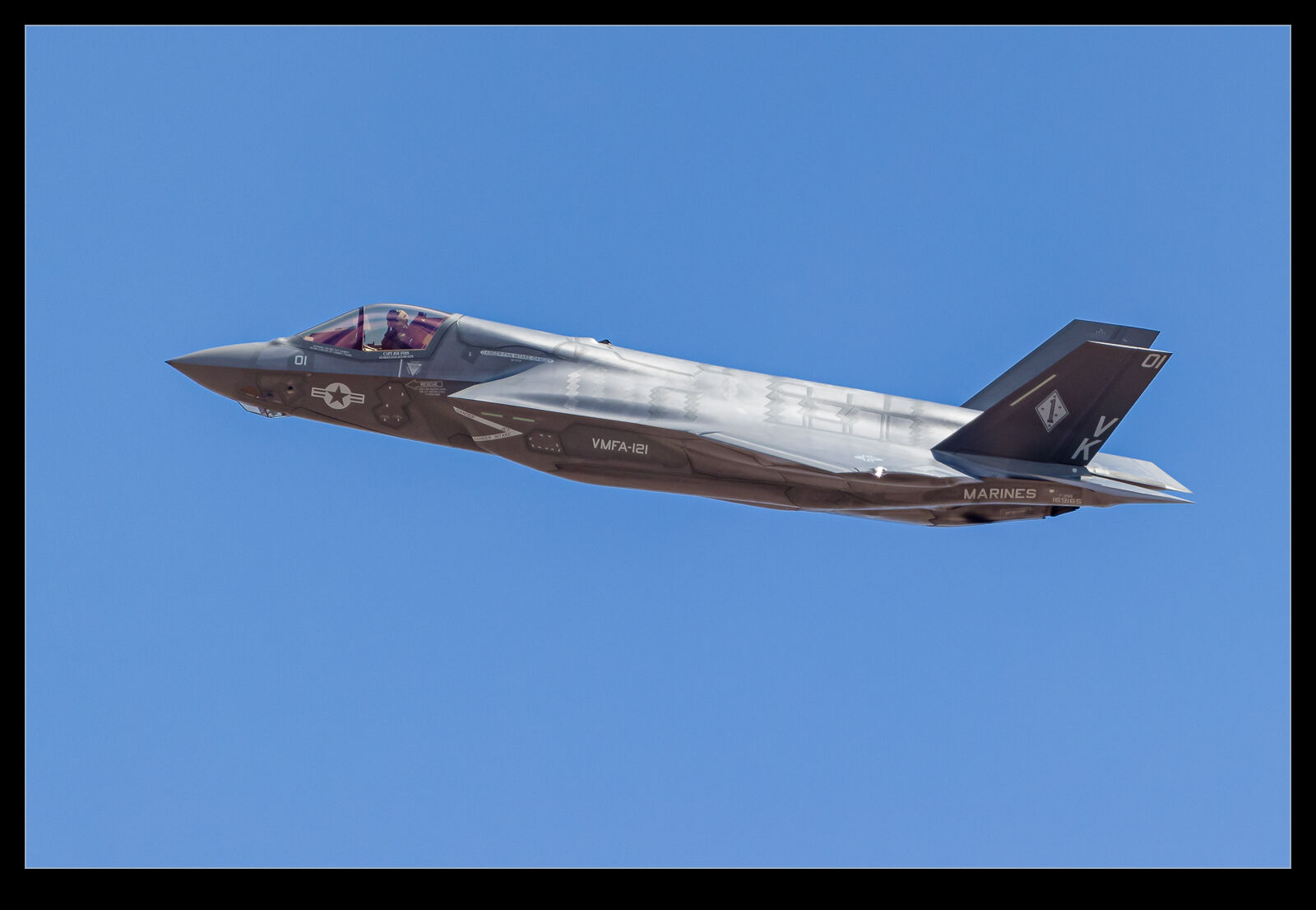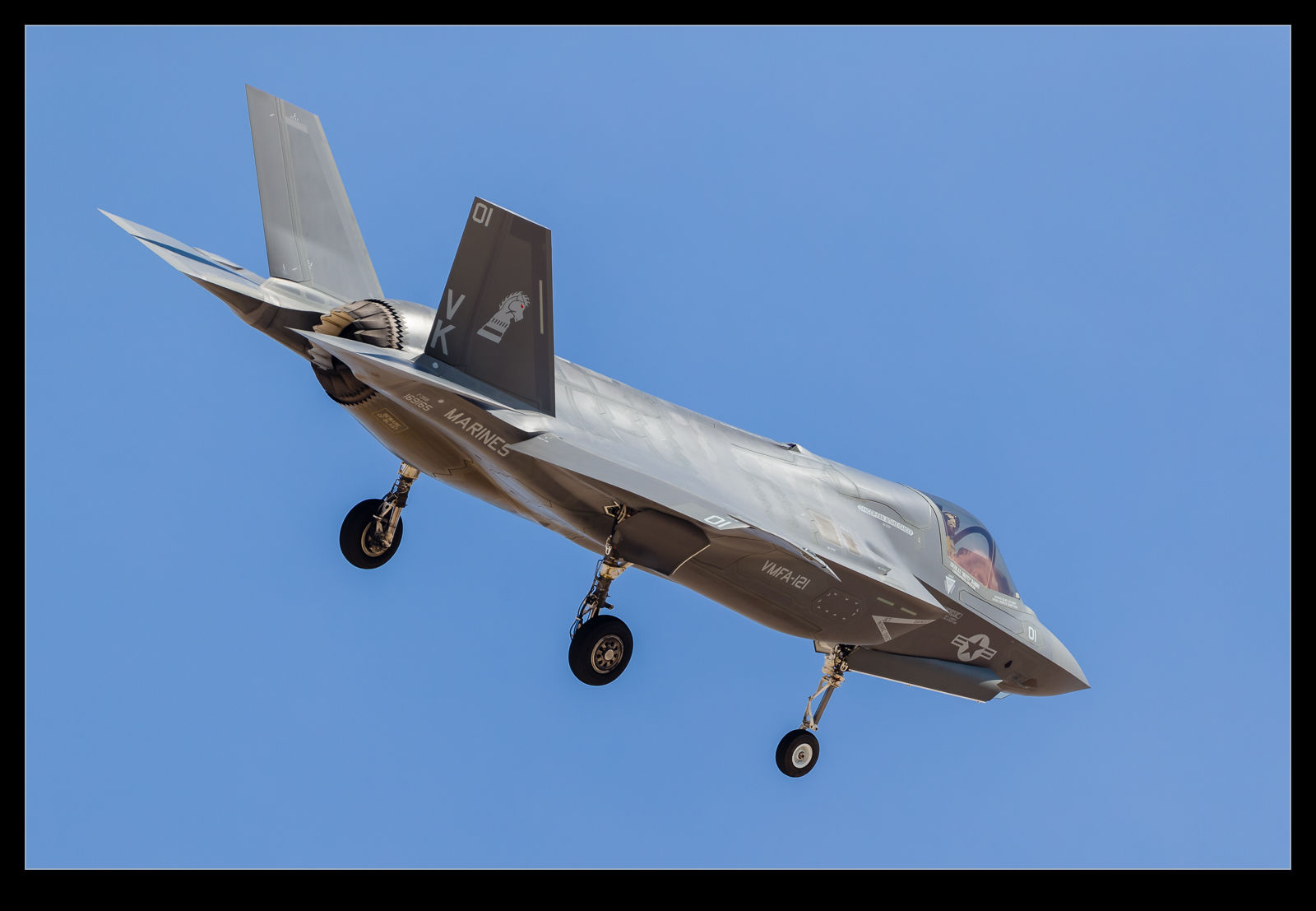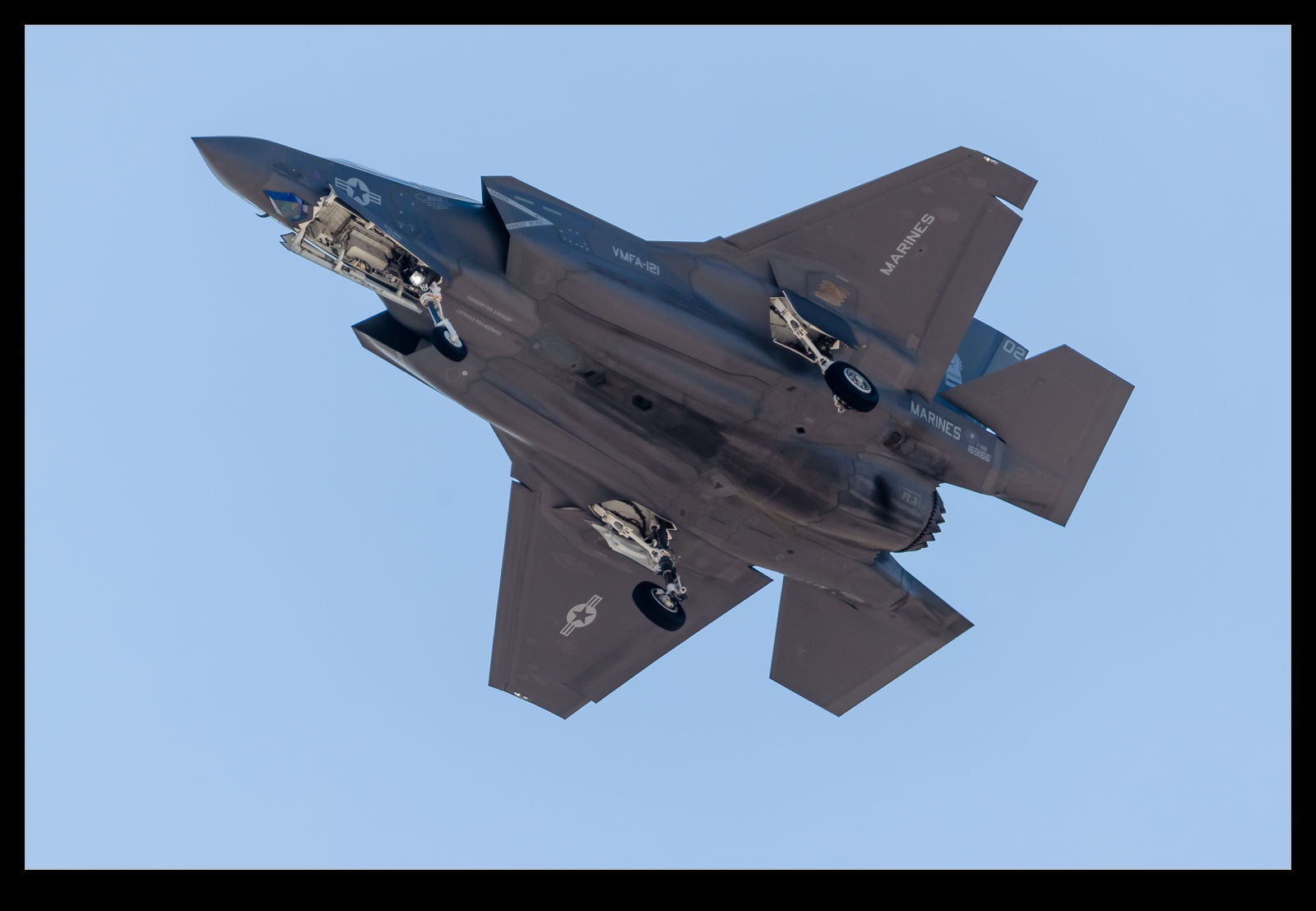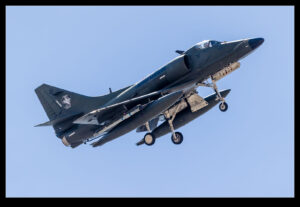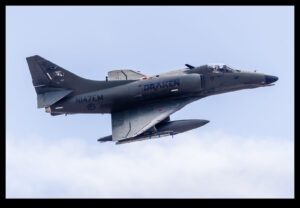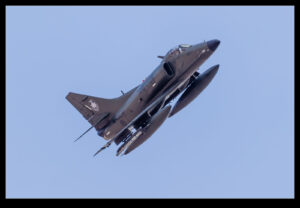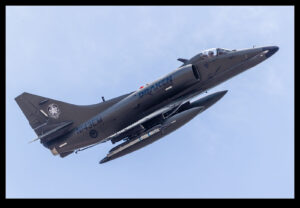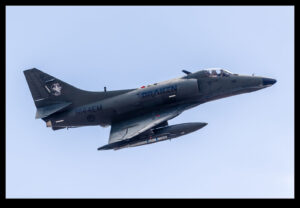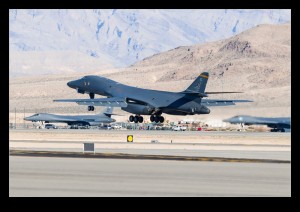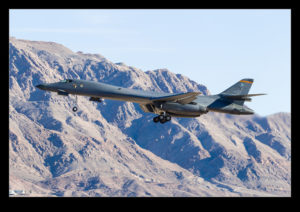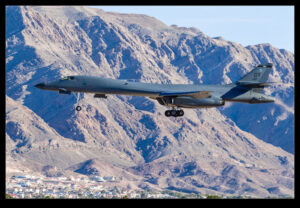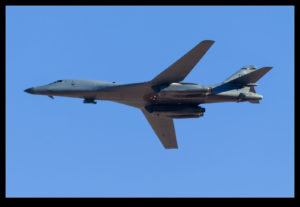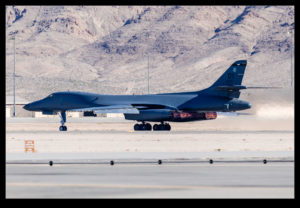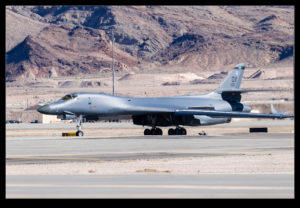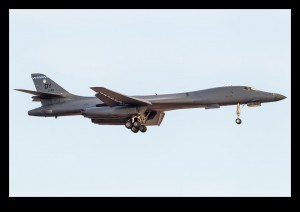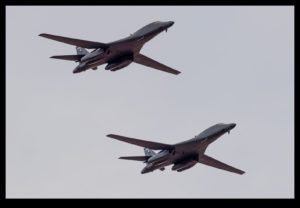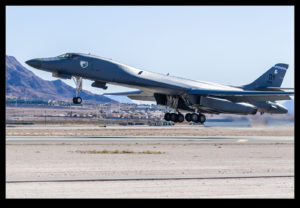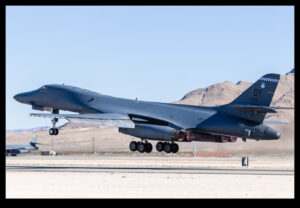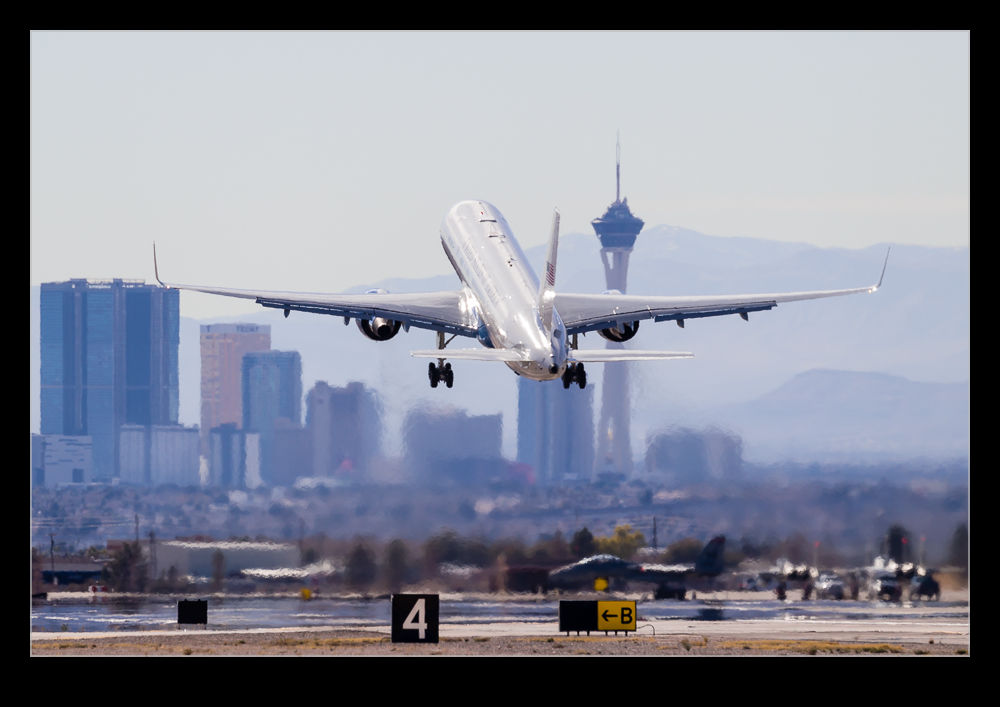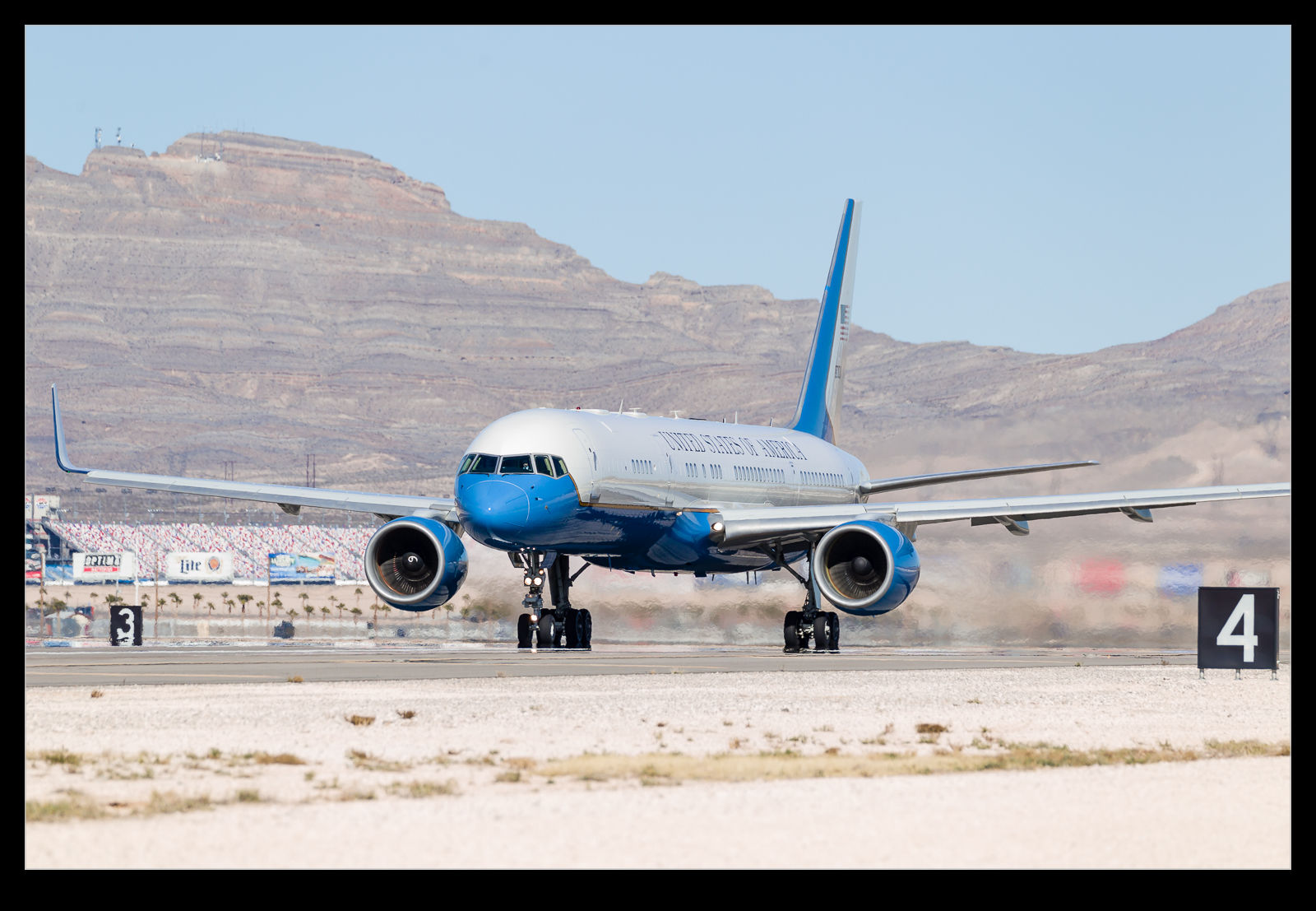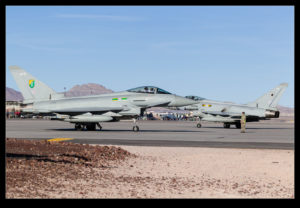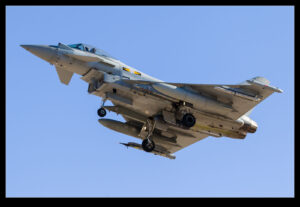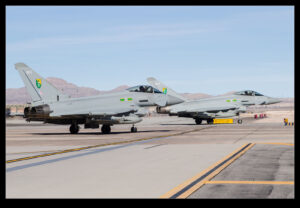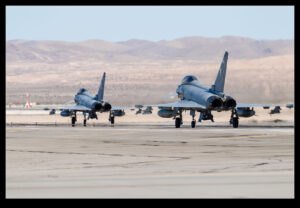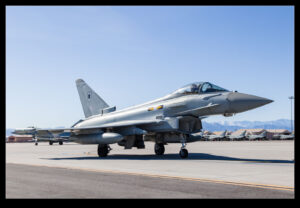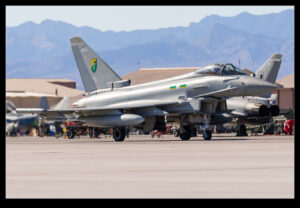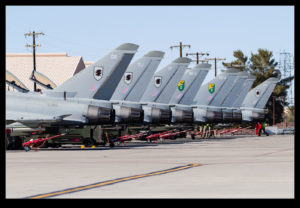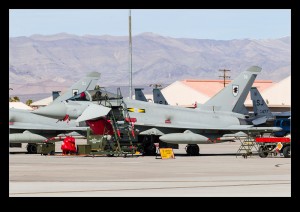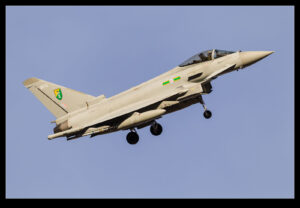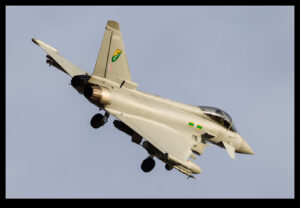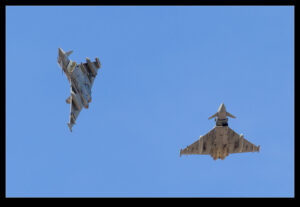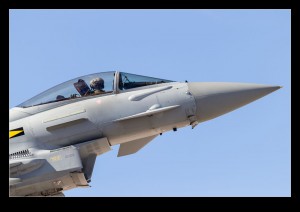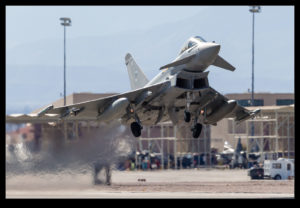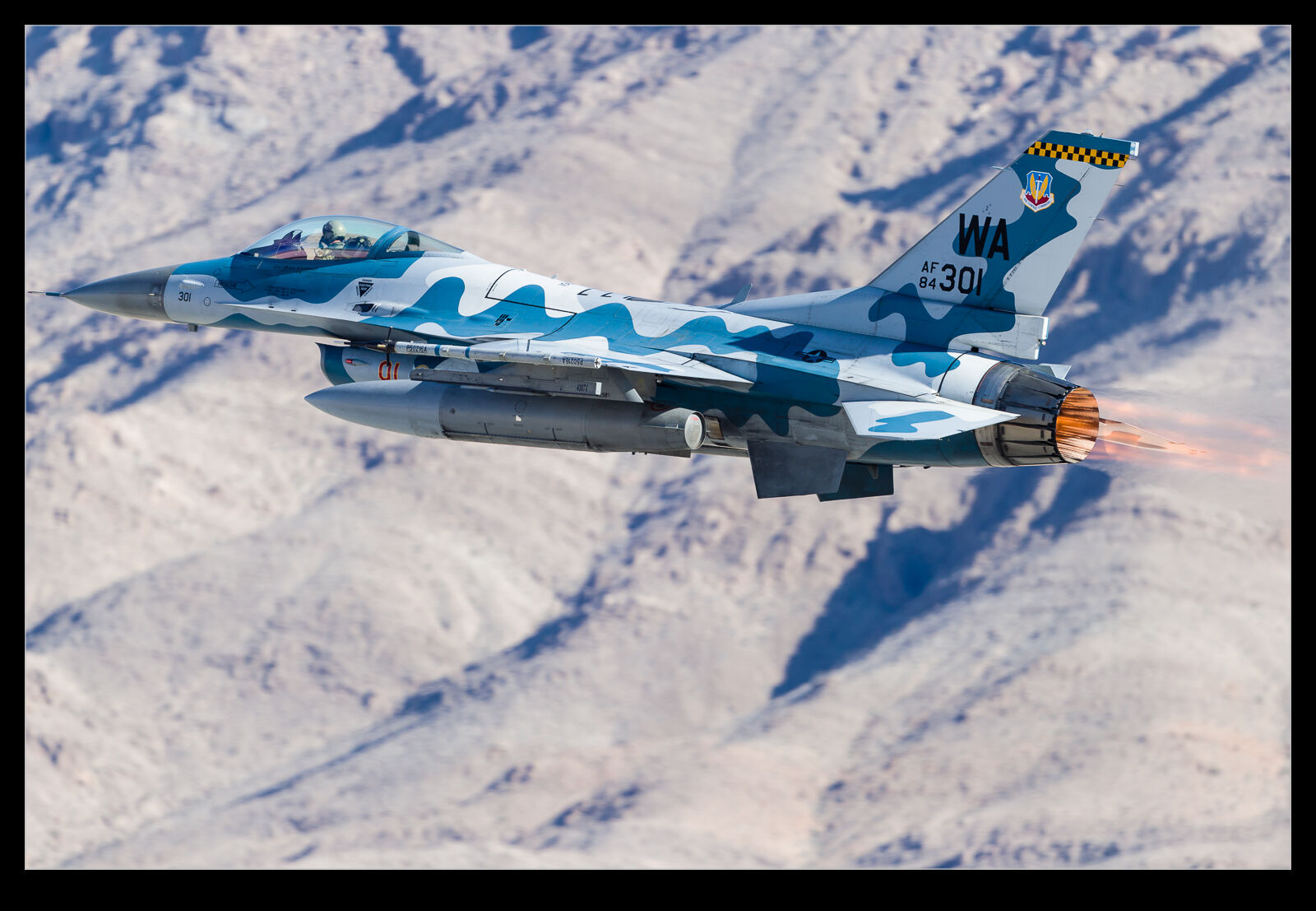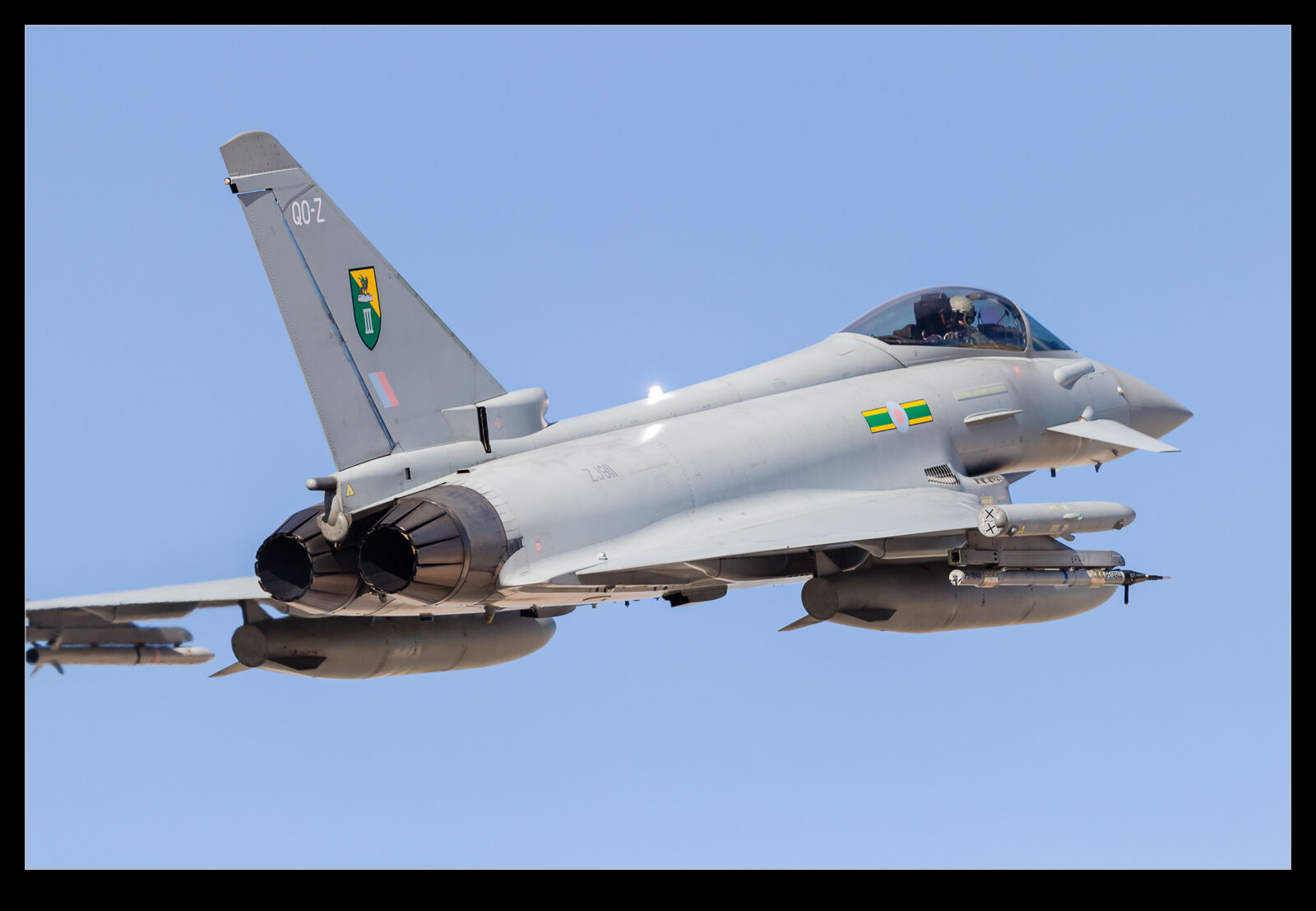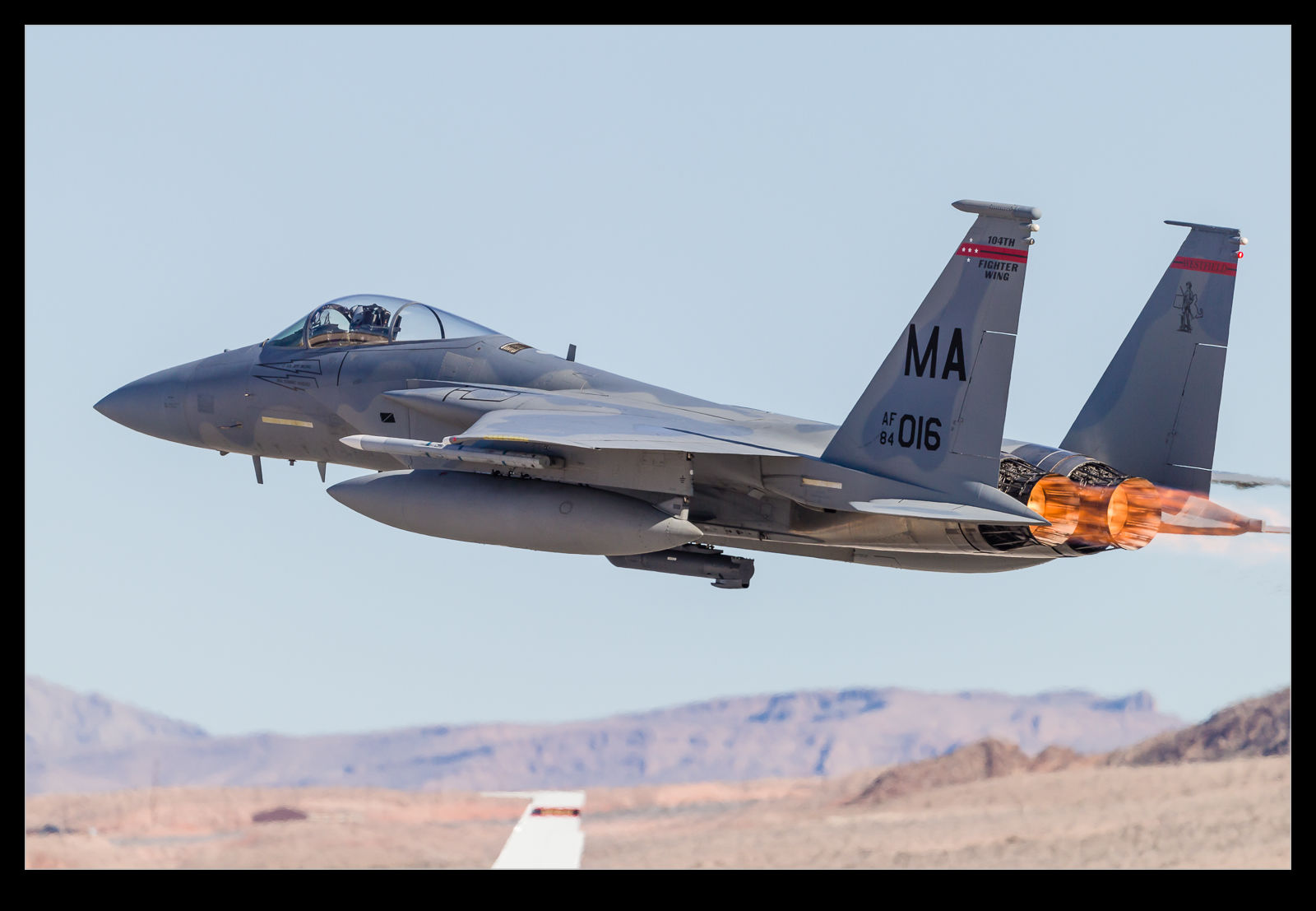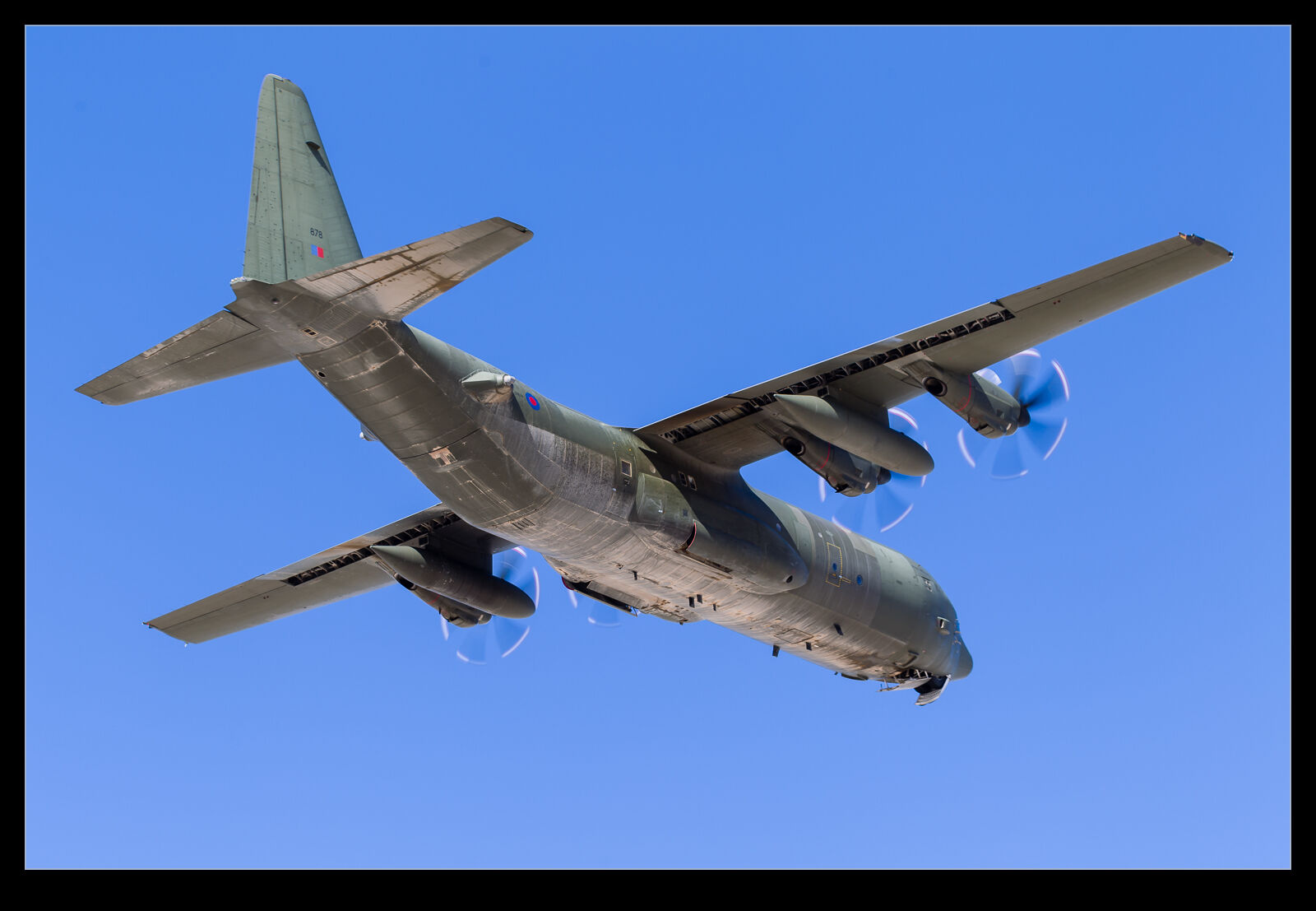 Red Flag may be well known for the fast jet activity but the jets aren’t the only ones that get to play. The transports also get to have a role. One of the exercises earlier this year included the U.K. RAF. They brought along a C-130 Hercules. I got to shoot it a couple of times. One thing that was clear as the aircraft took off was that the bottom of the fuselage was very dirty. I think it was safe to say that it had been landing on some rough strips somewhere out on the range.
Red Flag may be well known for the fast jet activity but the jets aren’t the only ones that get to play. The transports also get to have a role. One of the exercises earlier this year included the U.K. RAF. They brought along a C-130 Hercules. I got to shoot it a couple of times. One thing that was clear as the aircraft took off was that the bottom of the fuselage was very dirty. I think it was safe to say that it had been landing on some rough strips somewhere out on the range.
Tag Archives: las vegas
Sufas Finally Come Right
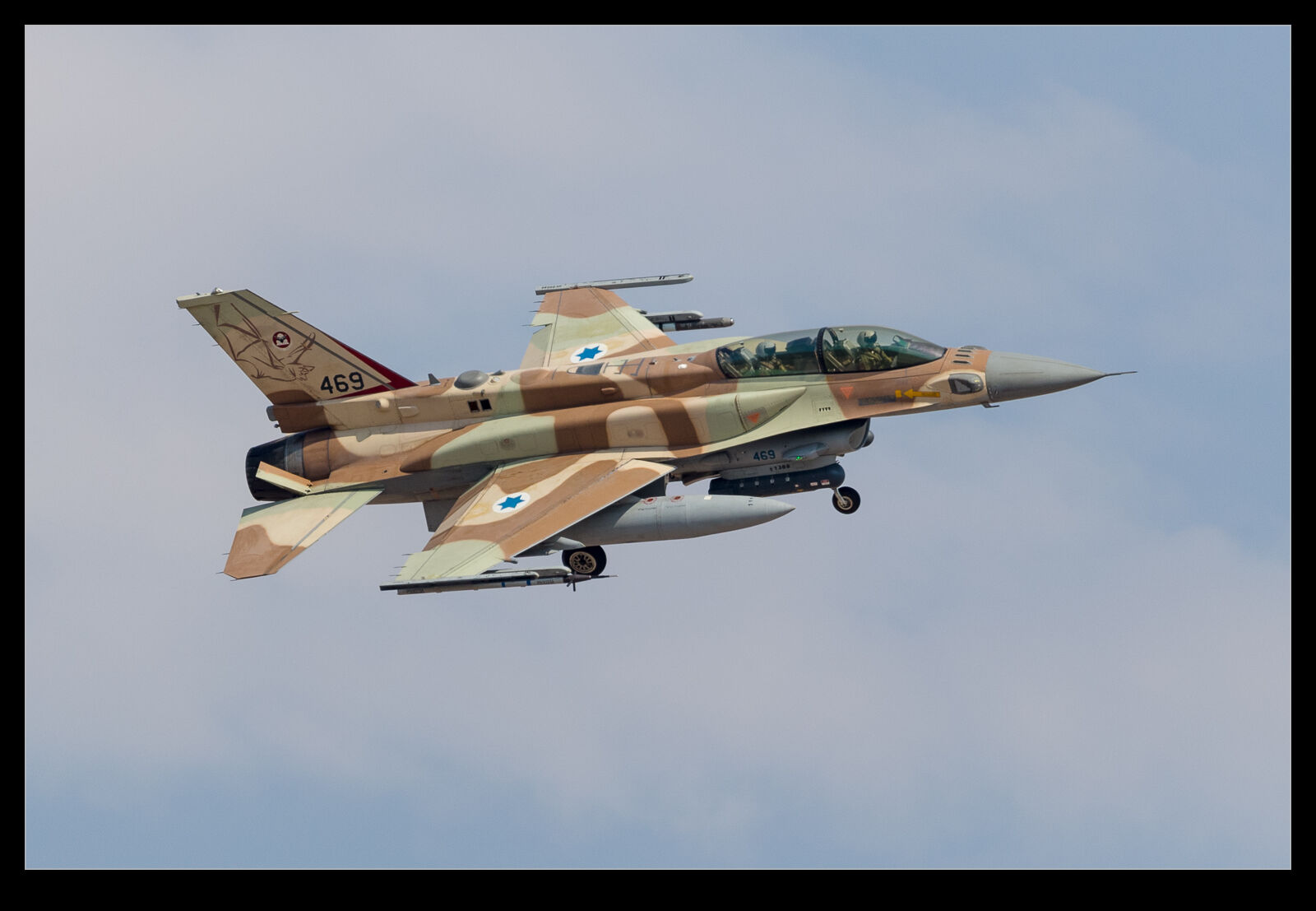 One of the big attractions of Red Flag 16-4 was the appearance of the F-16I jets of the Israeli Air Force. The Sufa is a variant of the F-16 that incorporates the conformal fuel tanks and a lot of local Israeli electronic equipment. In the days before I was there, the jets had been landing on the left runway which meant they broke away from the photographers and landed a fair distance away. When I was there, things changed.
One of the big attractions of Red Flag 16-4 was the appearance of the F-16I jets of the Israeli Air Force. The Sufa is a variant of the F-16 that incorporates the conformal fuel tanks and a lot of local Israeli electronic equipment. In the days before I was there, the jets had been landing on the left runway which meant they broke away from the photographers and landed a fair distance away. When I was there, things changed.
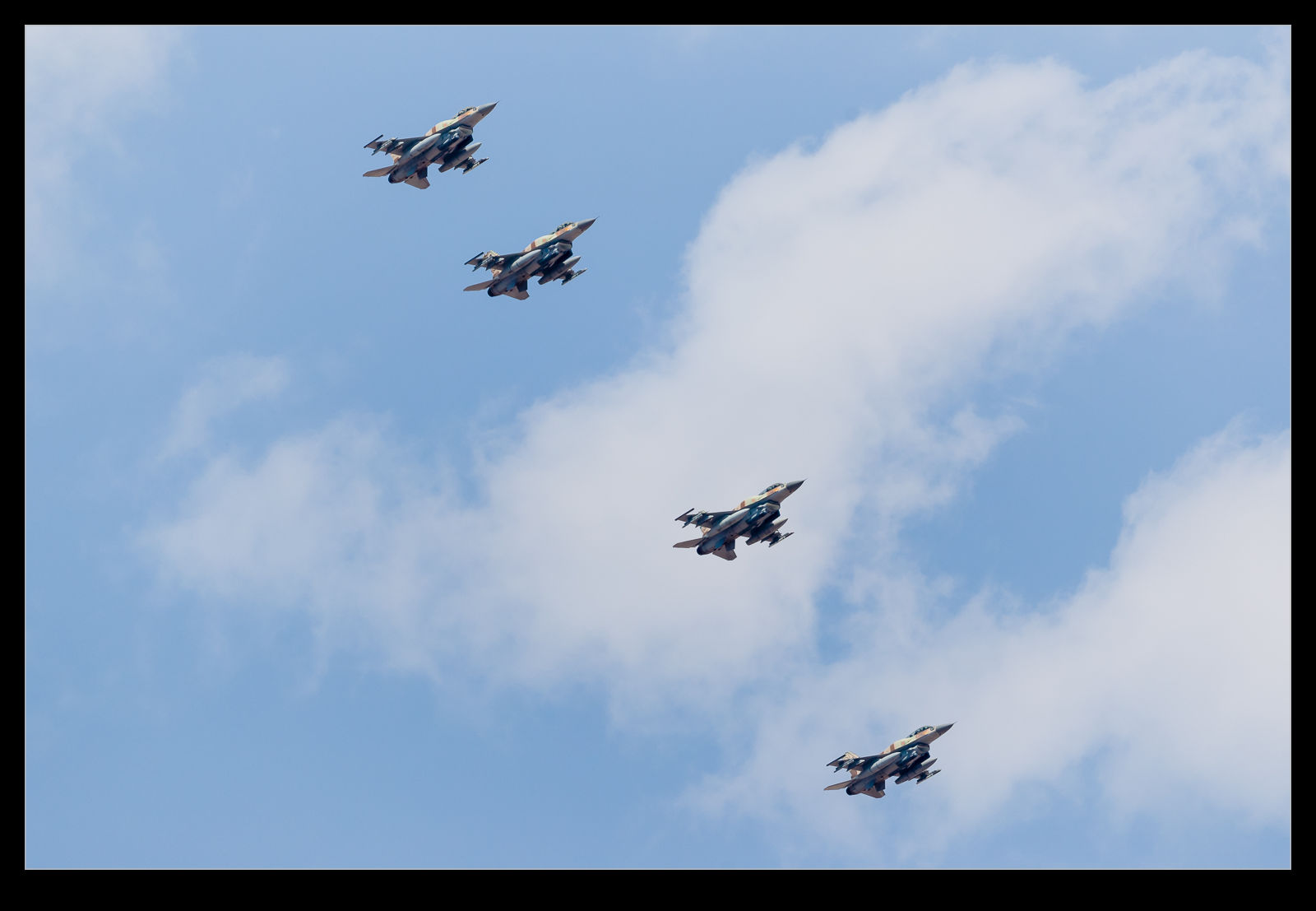 They started to come in with a right break for the right runway. This was really good news. It makes getting shots of them a lot easier. They didn’t fly very tight patterns so they were a little far away on the final turn but it was still better than if they went left. The departures were mainly from the far runway so they were a bit far then but it was still a good result for me.
They started to come in with a right break for the right runway. This was really good news. It makes getting shots of them a lot easier. They didn’t fly very tight patterns so they were a little far away on the final turn but it was still better than if they went left. The departures were mainly from the far runway so they were a bit far then but it was still a good result for me.
Pakistani Block 50 F-16s
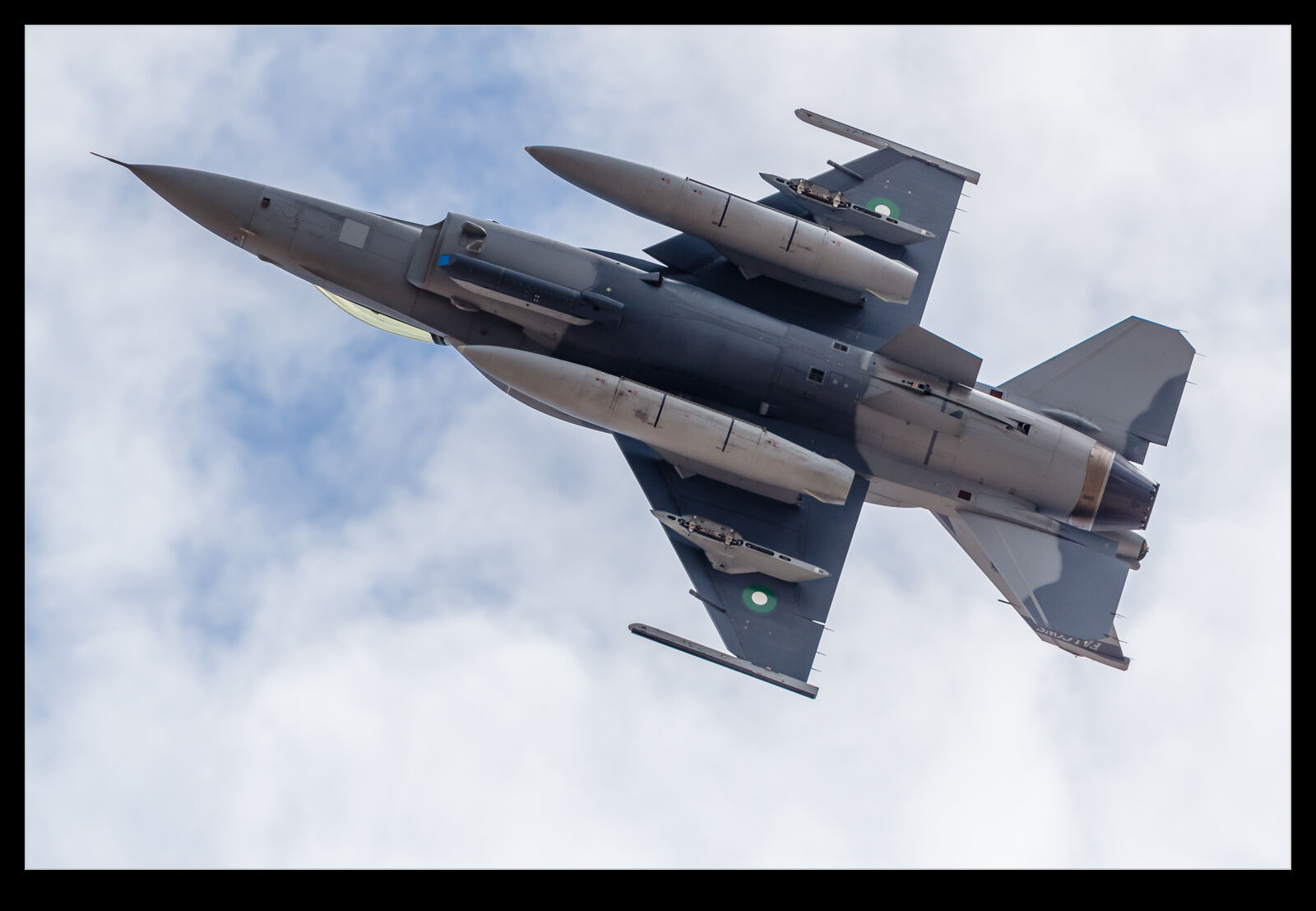 I have made two short visits to Nellis for recent Red Flag exercises. The Pakistani Air Force attended RF16-4 but they showed up near the end of the preceding RF16-3 to allow them to familiarize themselves with operations before the next exercise kicked off. They weren’t supposed to be flying while we were that after their arrival but the F-16s that launched over us clearly had the conformal tanks and it turned out that they were up and flying ahead of the rumored times. Sadly, it was a brief opportunity and the lighting wasn’t great.
I have made two short visits to Nellis for recent Red Flag exercises. The Pakistani Air Force attended RF16-4 but they showed up near the end of the preceding RF16-3 to allow them to familiarize themselves with operations before the next exercise kicked off. They weren’t supposed to be flying while we were that after their arrival but the F-16s that launched over us clearly had the conformal tanks and it turned out that they were up and flying ahead of the rumored times. Sadly, it was a brief opportunity and the lighting wasn’t great.
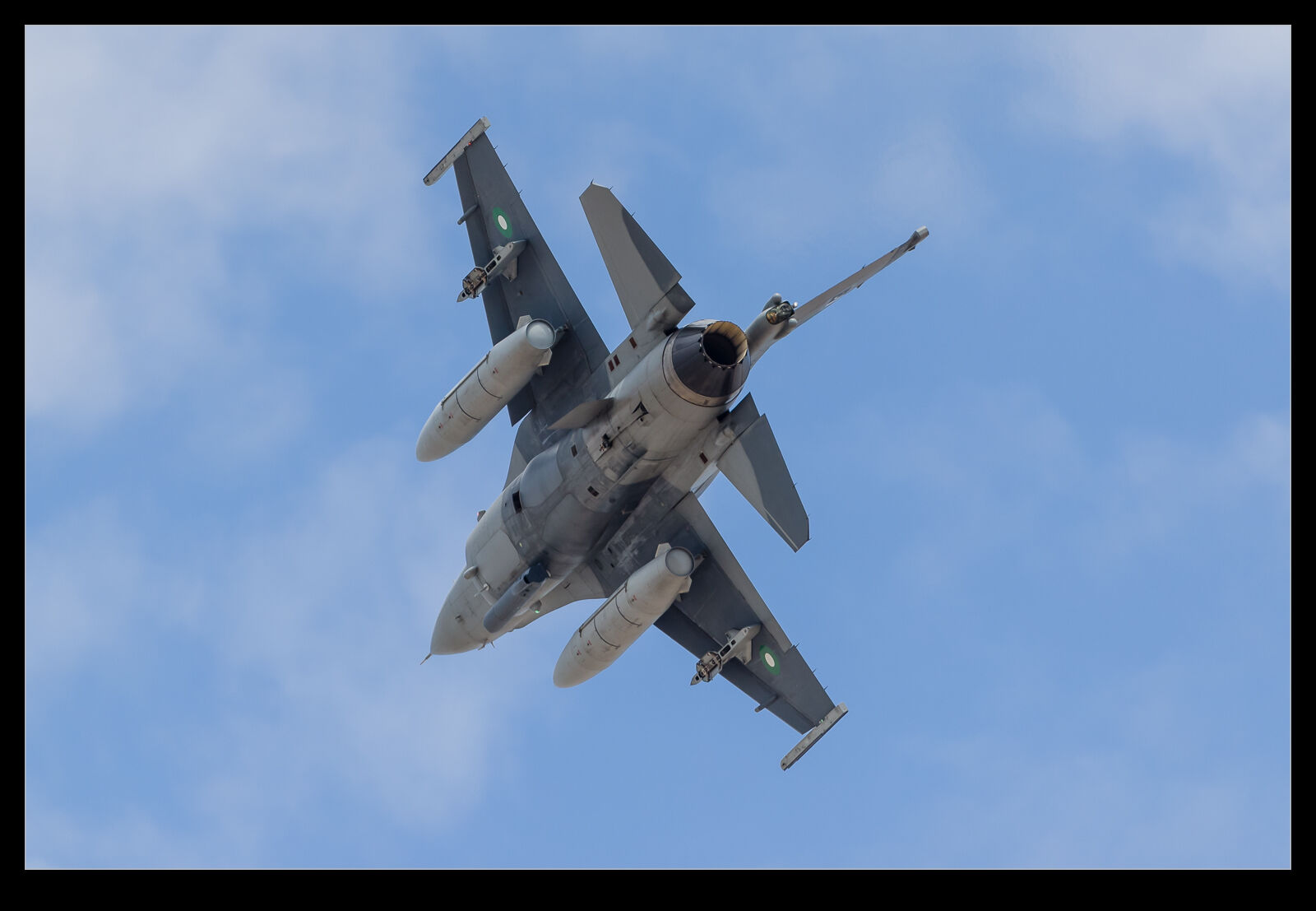 I did head back for RF16-4 and that trip will get a post of its own. Enough went on that week to easily fill another entry. However, staying on track, I did get to see the Pakistan jets as they launched and recovered. They are a recent build standard and, aside from the conformal tanks, they are also distinctive courtesy of a paint scheme that is different to the normal F-16s camouflage. I don’t know whether they had a productive time at Red Flag or not but I was glad to catch them while they were over.
I did head back for RF16-4 and that trip will get a post of its own. Enough went on that week to easily fill another entry. However, staying on track, I did get to see the Pakistan jets as they launched and recovered. They are a recent build standard and, aside from the conformal tanks, they are also distinctive courtesy of a paint scheme that is different to the normal F-16s camouflage. I don’t know whether they had a productive time at Red Flag or not but I was glad to catch them while they were over.
My First F-35B Jets
I have had a bunch of times when I have seen F-35 jets. I got to shoot the first prototype at Fort Worth in its early days. After that, I didn’t see any more for a long time. As the production jets started to show up, I saw a number of them at Nellis AFB. Sadly, when we were on base we weren’t allowed to shoot them and when I was off base, I was always in a bad place to get shots of them. As a result, I do not have many useful shots in my catalog.
I had no shots of the B model. This is the one being developed for the Marine Corps to replace their Harriers and Hornets. It is also being acquired by the UK and Italy to use from their carriers. Red Flag 16-3 was the first one that the Marines brought their jets to so I was pleased to get a chance to shoot them. My timing was not great and there was limited flying while I was there. However, the Marines did launch a pair while we were in place. Nicely, both jets flexed on departure and came towards our position quite nicely. Recovery was a different story. For those that aren’t familiar with shooting at the Speedway, there is a constant debate about which gate is the best one to be at. Some jets turn on to final very tightly and you need to be a inside Gate 4 to get a good shot. Sadly, a lot of the jets turn long and they can be a long way off if you are at 4. If there is a four ship, the later jets tend to turn later so, even if the first jet is good, the later ones can be a way off.
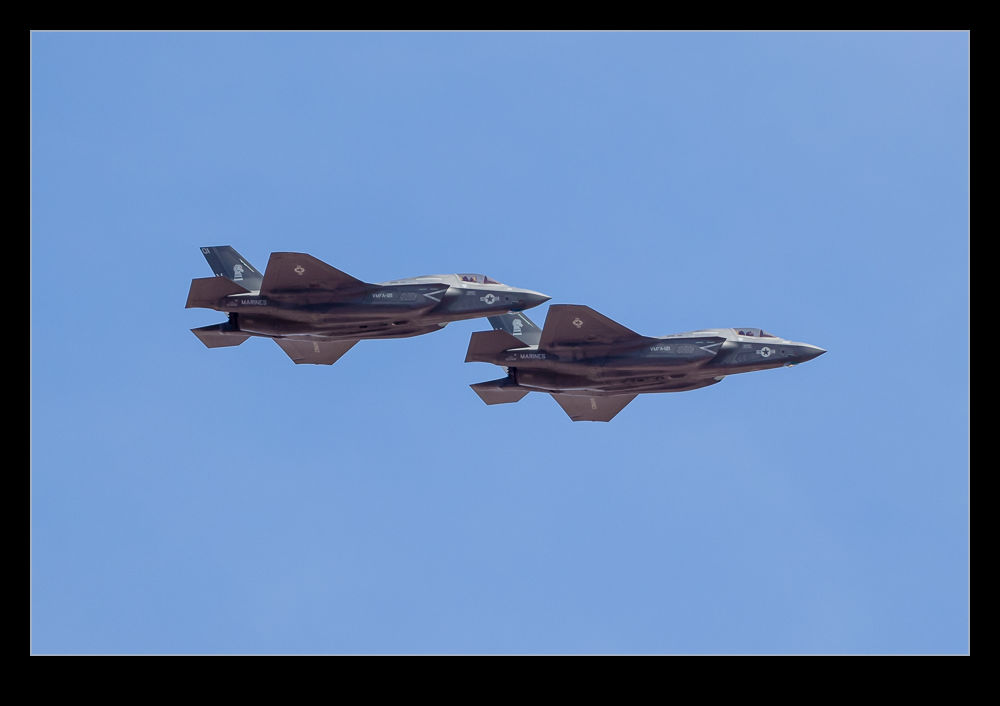 If the jets are Navy or Marines, you need to be on your toes. They can be a lot more enthusiastic about keeping their patterns tight. When the two F-35s returned, we soon realized everyone else knew something we needed to know. They were all grabbing their cameras and running down the street. I took a while to catch on. The first jet turned very tightly. Even as I ran, I could only get a head on shots as he turned inside me. I then got moving again and was just about in a reasonable option for the second jet.
If the jets are Navy or Marines, you need to be on your toes. They can be a lot more enthusiastic about keeping their patterns tight. When the two F-35s returned, we soon realized everyone else knew something we needed to know. They were all grabbing their cameras and running down the street. I took a while to catch on. The first jet turned very tightly. Even as I ran, I could only get a head on shots as he turned inside me. I then got moving again and was just about in a reasonable option for the second jet.
The second day we were there, timing was again not in our favor. Just as the 35s were returning, a pair of Growlers were launching to head home. They were coming off the runway we needed the jets to land on to get good shots. Instead, they were sent to the other runway. They broke left towards the hills. We did have some recovery though. By the time they had run downwind, the Growlers were gone and the runway was clear. They switched to land on our side. We had lost the final turn but at least they came closer when on final. At some point these jets will be very common but the first encounter is fun.
Scooters in the Overcast
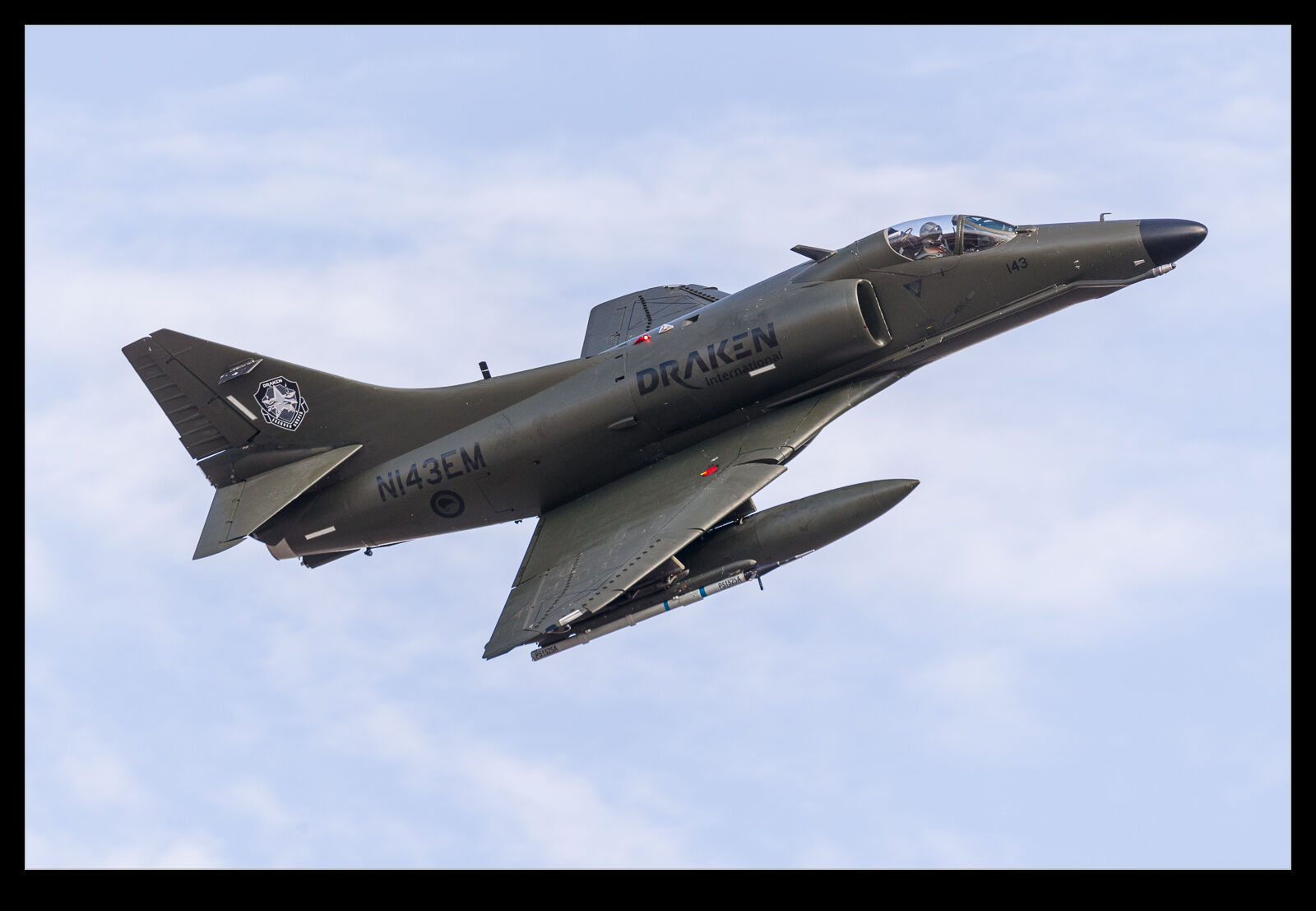 Draken International has been acquiring some of the best of the retired A-4 Skyhawks to add to their fleet. Their goal is the provision of tactical training services to air forces. Their jets have come from Israel and New Zealand and they have won a number of contracts. I saw them at Nellis AFB where they were providing support services to the USAF. They had a number of jets there working on Red Flag and weapons school projects.
Draken International has been acquiring some of the best of the retired A-4 Skyhawks to add to their fleet. Their goal is the provision of tactical training services to air forces. Their jets have come from Israel and New Zealand and they have won a number of contracts. I saw them at Nellis AFB where they were providing support services to the USAF. They had a number of jets there working on Red Flag and weapons school projects.
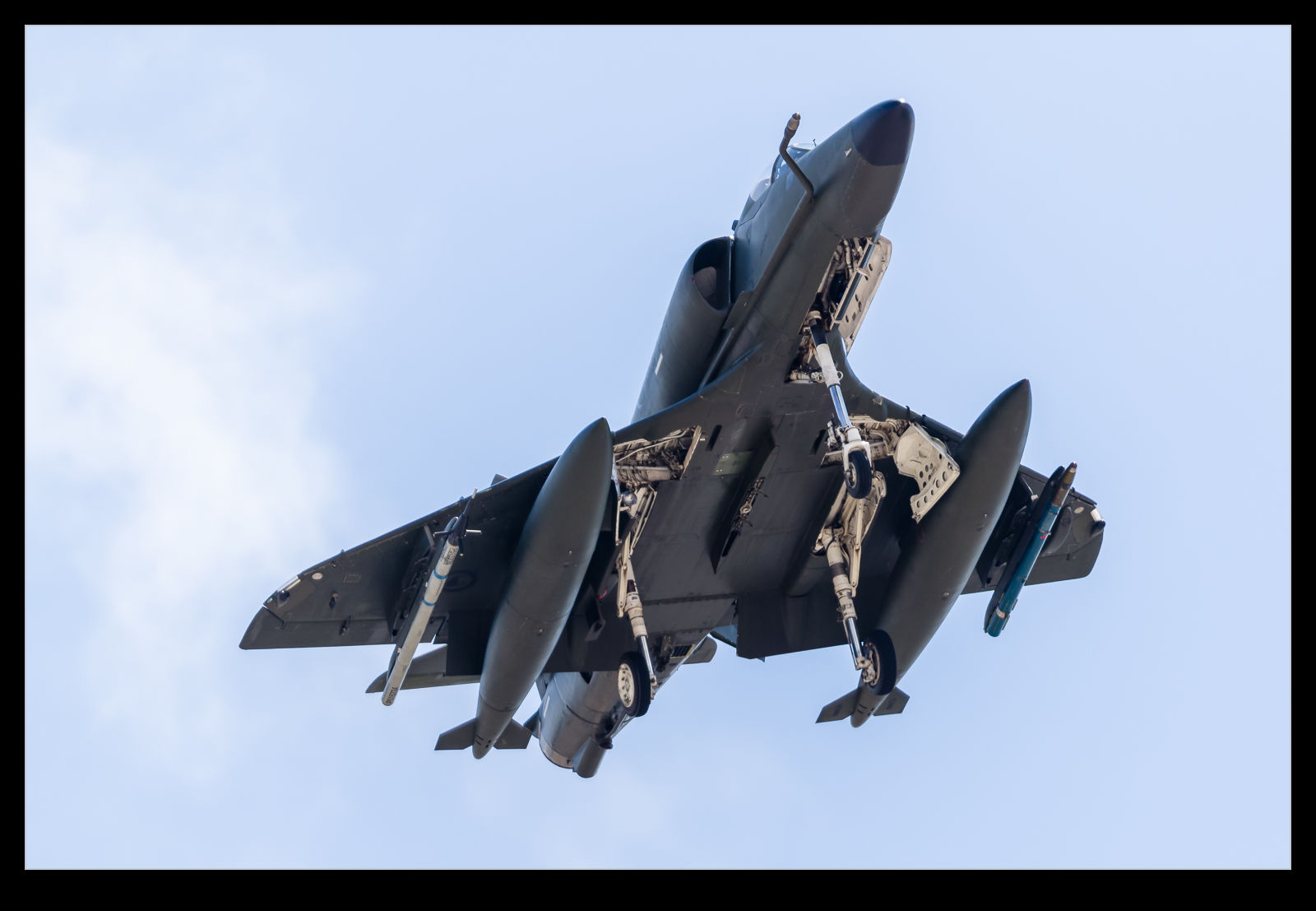 We didn’t get the best conditions to shoot them. They were departing in the morning in conditions when they were rather backlit. For the recoveries, we were struggling to be in the right place to get them. Overall, I was not too happy with the results. I will be back at some point though. Hopefully I will get a better chance to shoot them. Having missed the media day, I didn’t get to shoot them on base which would have been a lot better. Sadly, the twin seater was lost shortly after my visit. Fortunately, the pilot banged out okay.
We didn’t get the best conditions to shoot them. They were departing in the morning in conditions when they were rather backlit. For the recoveries, we were struggling to be in the right place to get them. Overall, I was not too happy with the results. I will be back at some point though. Hopefully I will get a better chance to shoot them. Having missed the media day, I didn’t get to shoot them on base which would have been a lot better. Sadly, the twin seater was lost shortly after my visit. Fortunately, the pilot banged out okay.
- An A-4K of Draken International climbs out of Nellis AFB in support of a USAF training mission.
B-1Bs on a Mission
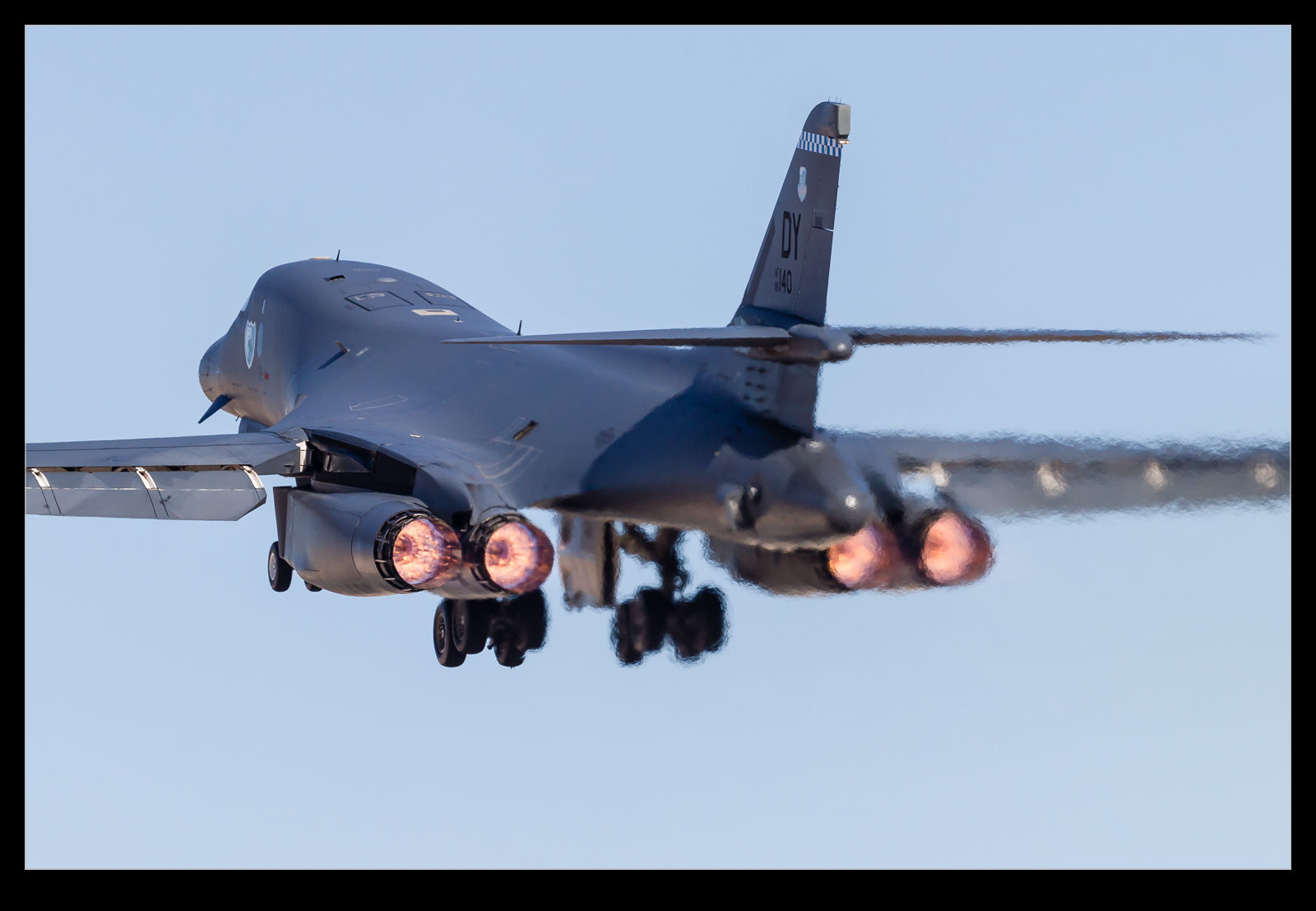 The B-1B Lancer is a cracking aircraft. The combination of size and power makes it look epic when it is in action. A B-1 departure is not something that you will forget in a hurry. Four large afterburning turbofans will get your attention and it has a very elegant shape to boot. The variable sweep wings add a little interest too. At minimum sweep for takeoff and landing, they look a little ungainly given how long the span is. Put them all the way back and pour on the coals and the jet can really get moving. Sadly, airshow appearances are few and far between these days so the chance to see vapor clouds forming around the jet are limited. (I recently went through some old negatives from a UK airshow at which a B-1 made a fast pass in damp conditions. The shots aren’t great but the effect is cool.)
The B-1B Lancer is a cracking aircraft. The combination of size and power makes it look epic when it is in action. A B-1 departure is not something that you will forget in a hurry. Four large afterburning turbofans will get your attention and it has a very elegant shape to boot. The variable sweep wings add a little interest too. At minimum sweep for takeoff and landing, they look a little ungainly given how long the span is. Put them all the way back and pour on the coals and the jet can really get moving. Sadly, airshow appearances are few and far between these days so the chance to see vapor clouds forming around the jet are limited. (I recently went through some old negatives from a UK airshow at which a B-1 made a fast pass in damp conditions. The shots aren’t great but the effect is cool.)
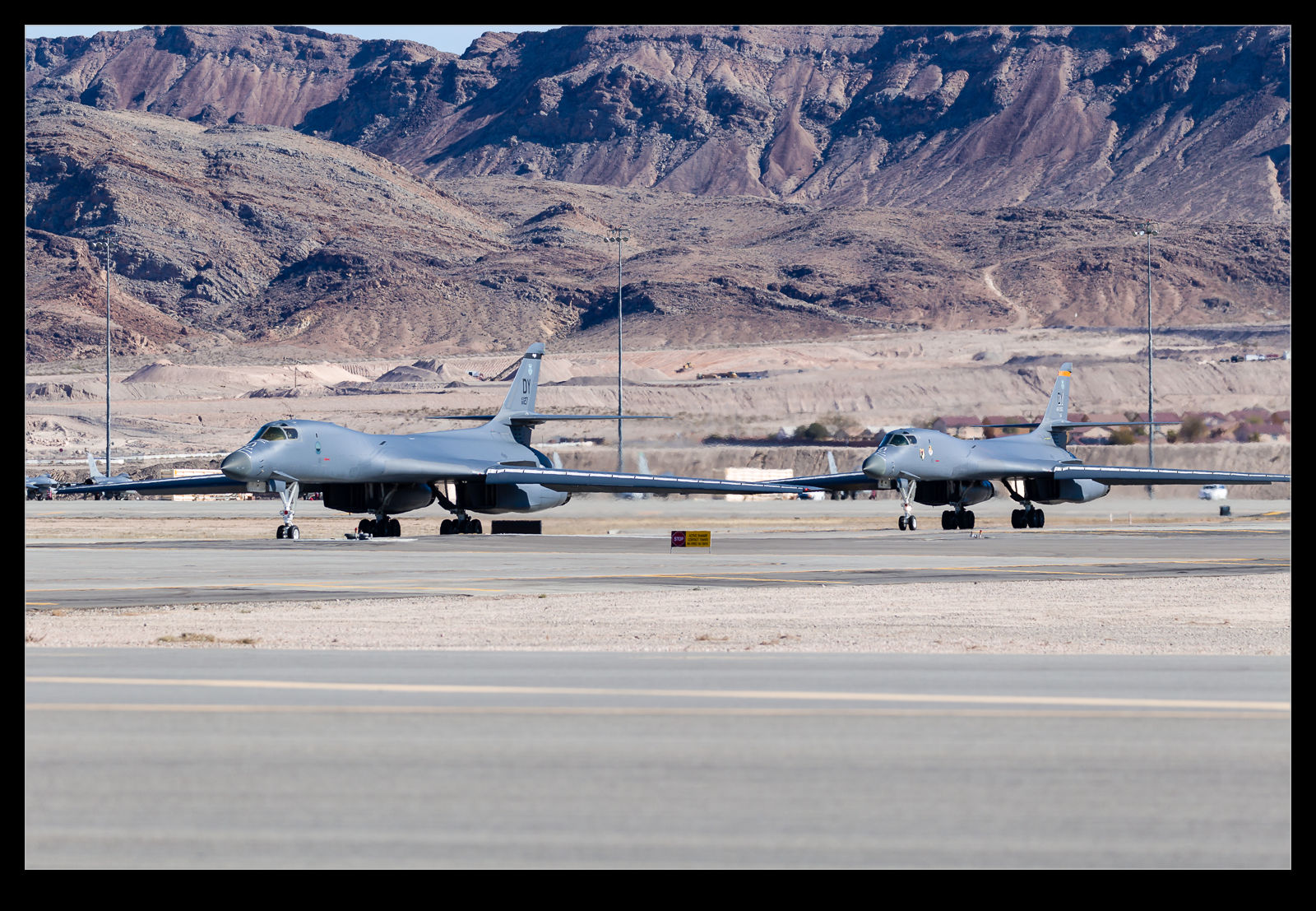 A couple of B-1s would launch each day as part of the Red Flag 16-1 exercises. I was lucky enough to have a couple of good opportunities to see then. When we were out between the runways, the B-1s launched off the right side. Not ideal for lighting but you aren’t going to complain. Because they are a large jet, you have to make some choices with lenses as to what you are aiming to get. A quick swap of bodies can really help. A long lens is not much use when they are level with you but the cool shot from behind as they climb out benefits from the big glass.
A couple of B-1s would launch each day as part of the Red Flag 16-1 exercises. I was lucky enough to have a couple of good opportunities to see then. When we were out between the runways, the B-1s launched off the right side. Not ideal for lighting but you aren’t going to complain. Because they are a large jet, you have to make some choices with lenses as to what you are aiming to get. A quick swap of bodies can really help. A long lens is not much use when they are level with you but the cool shot from behind as they climb out benefits from the big glass.
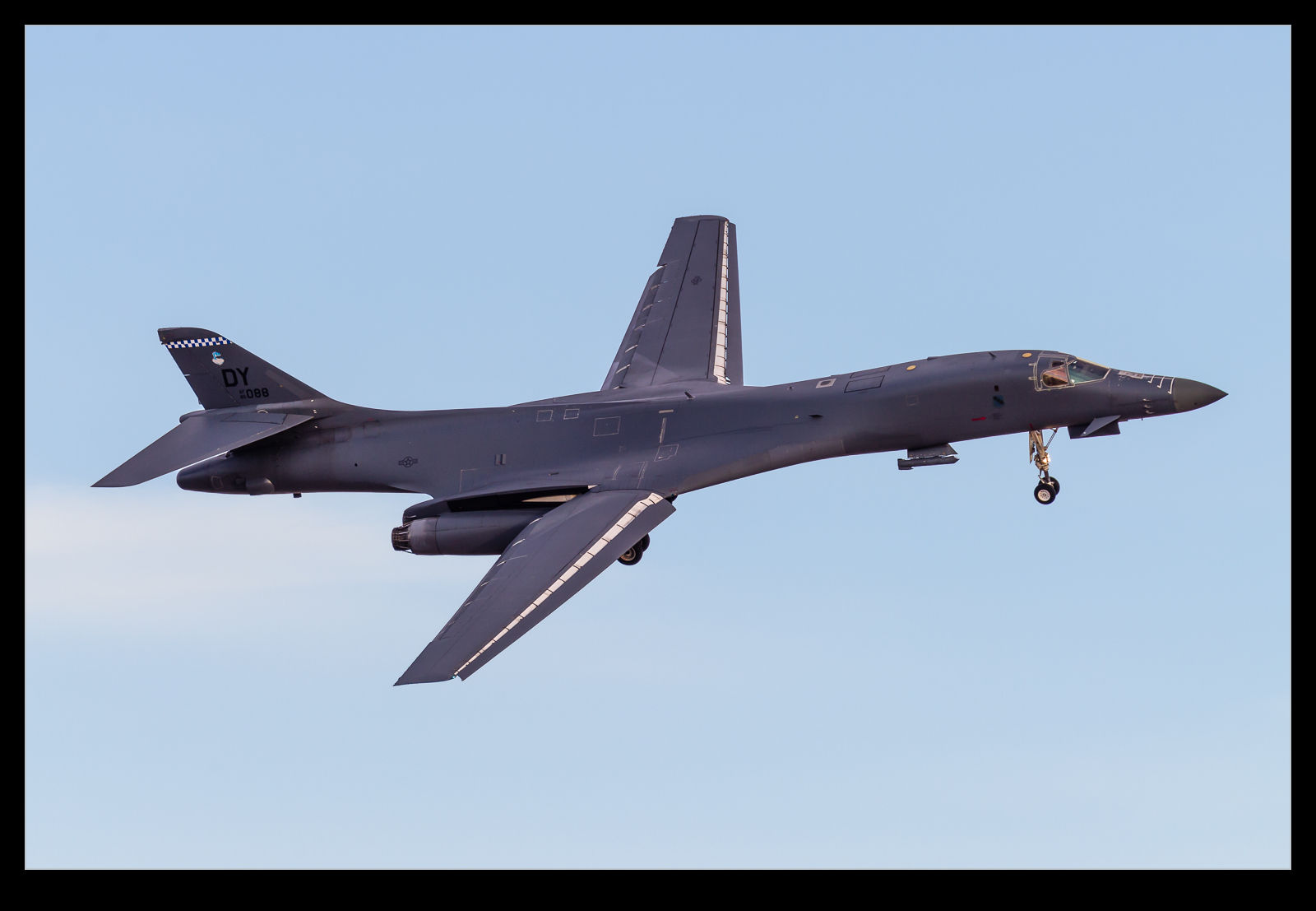 On my first day there, the jets returned at the end of the mission as a pair. Sadly, the clouds had moved in and the conditions were not great for getting a shot. However, you aren’t going to ignore them. On the second day when I was at the EOR, we got a good view of the two jets taxiing out and taking off. The heat haze is a bit of a problem but not so much as to make it something you can avoid shooting. Operating as a pair, they look more menacing.
On my first day there, the jets returned at the end of the mission as a pair. Sadly, the clouds had moved in and the conditions were not great for getting a shot. However, you aren’t going to ignore them. On the second day when I was at the EOR, we got a good view of the two jets taxiing out and taking off. The heat haze is a bit of a problem but not so much as to make it something you can avoid shooting. Operating as a pair, they look more menacing.
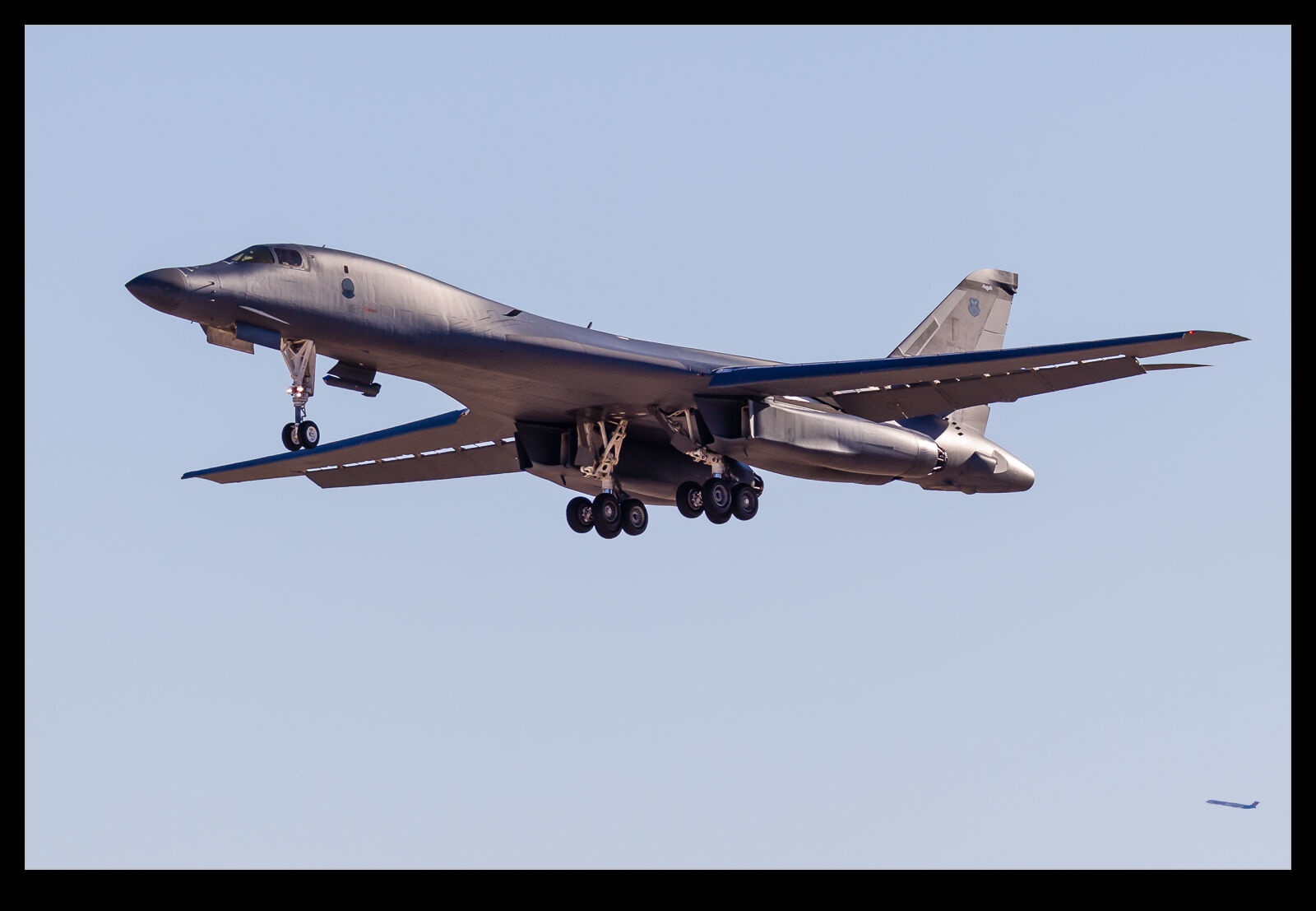 Often the B-1s are at the end of the recovery phase. However, on this day, they came back relatively early. I was still at the EOR when they broke into the pattern. They did land on the opposite runway from the one we were at but they are big enough for this to not be a big deal. A nice bit of mountain in the background certainly helps enhance the shot a little. What a great looking jet. I don’t know anyone who isn’t excited when they see one in action.
Often the B-1s are at the end of the recovery phase. However, on this day, they came back relatively early. I was still at the EOR when they broke into the pattern. They did land on the opposite runway from the one we were at but they are big enough for this to not be a big deal. A nice bit of mountain in the background certainly helps enhance the shot a little. What a great looking jet. I don’t know anyone who isn’t excited when they see one in action.
- A USAF B-1B Lancer on final approach to Nellis AFB Las Vegas Nevada as part of a Red Flag mission.
- A USAF B-1B Lancer on final approach to Nellis AFB Las Vegas Nevada as part of a Red Flag mission.
- A USAF B-1B Lancer overflies Nellis AFB Las Vegas Nevada prior to breaking into the pattern to land after a Red Flag mission.
- Two USAF B-1B Lancers approach the break at Nellis AFB Las Vegas Nevada after a Red Flag mission.
- A Boeing B-1B Lancer of the USAF takes off from Nellis AFB Las Vegas Nevada on a Red Flag Mission.
A Very Pleasant VC-32 Surprise
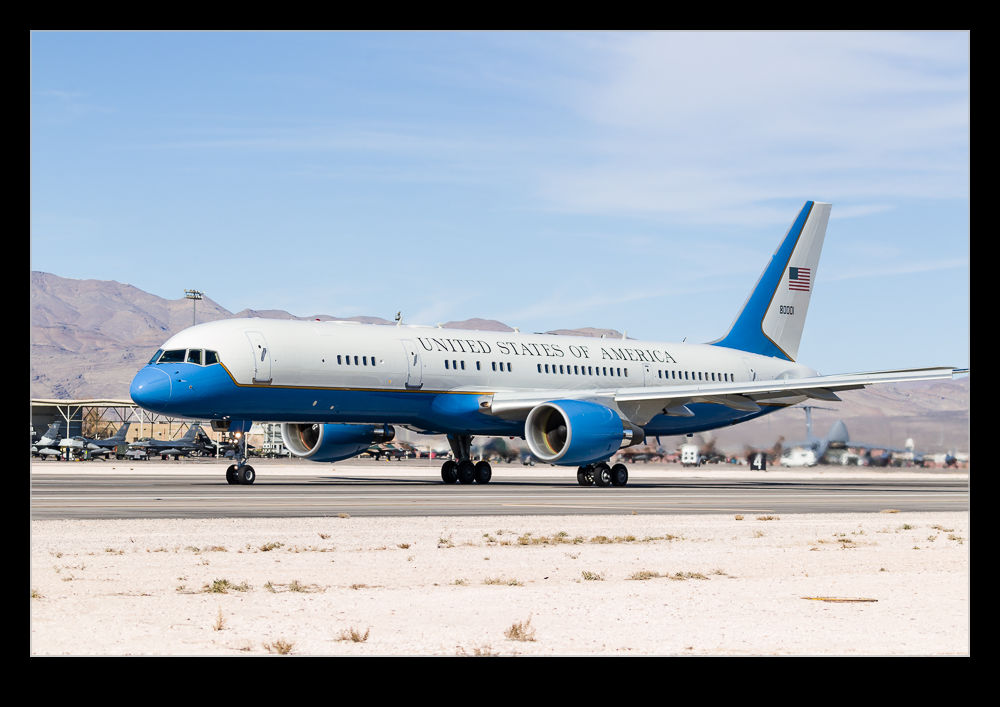 You go to Red Flag with the goal of seeing a lot of different combat aircraft. However, Nellis is a regular base and has other traffic. You don’t always see something during the course of a mission launch but sometimes it happens. While we were checking in at the gate, a VC-32 came down the approach. This is the USAF’s version of the Boeing 757 and it is a pretty nice looking plane. Unfortunately, when we are the gate, the security team is not too keen on us taking shots so we watched it land and figured we had missed our chance.
You go to Red Flag with the goal of seeing a lot of different combat aircraft. However, Nellis is a regular base and has other traffic. You don’t always see something during the course of a mission launch but sometimes it happens. While we were checking in at the gate, a VC-32 came down the approach. This is the USAF’s version of the Boeing 757 and it is a pretty nice looking plane. Unfortunately, when we are the gate, the security team is not too keen on us taking shots so we watched it land and figured we had missed our chance.
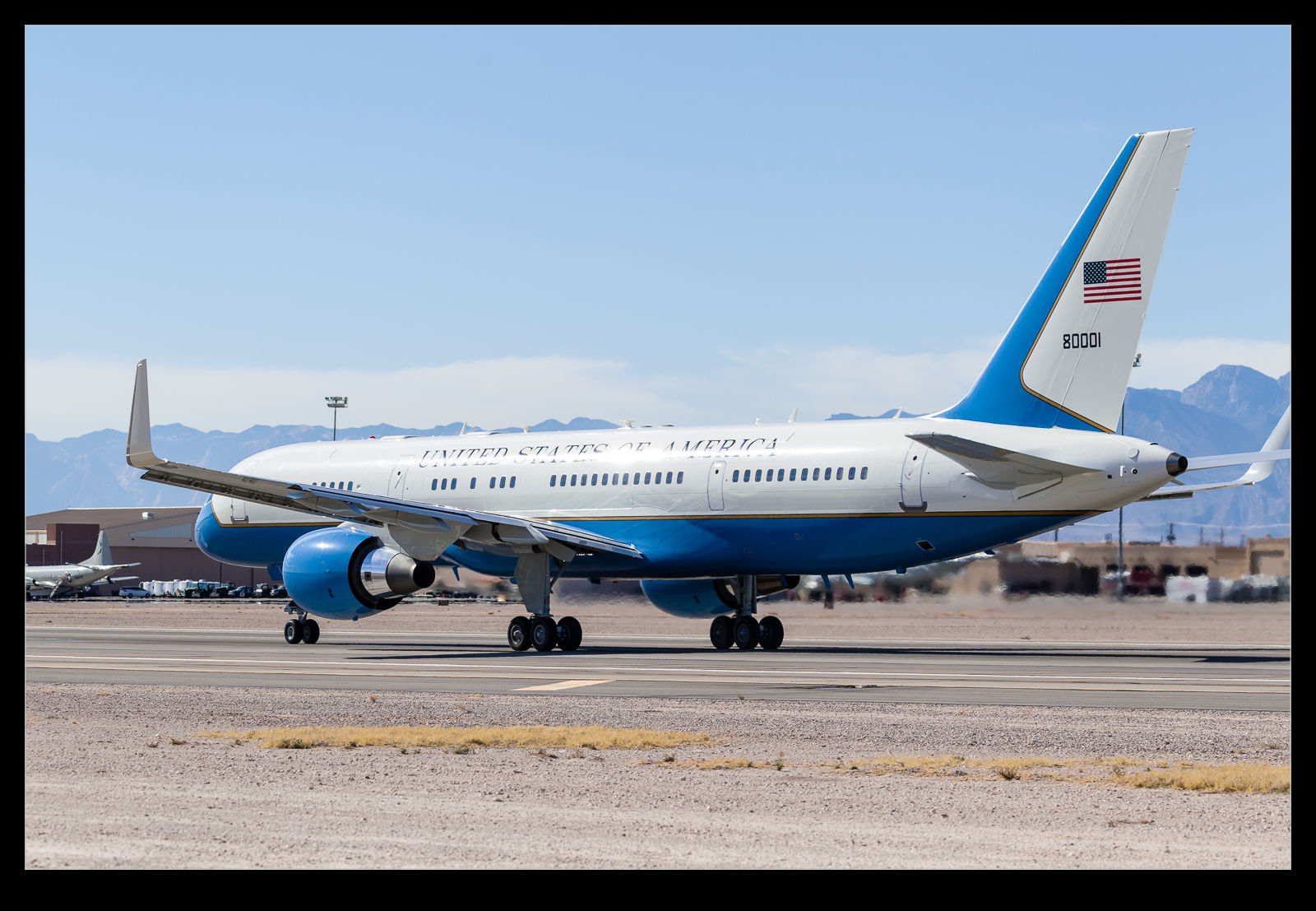 Turns out we were wrong. While we were out between the runways, the VC-32 taxied out and got ready to depart. Even better, it departed to the southwest which meant it came past us with good light on it. It turns out that Secretary of Defense, Ash Carter had been visiting and the plane was taking him onwards. I was very happy to get something I haven’t seen up close for a number of years.
Turns out we were wrong. While we were out between the runways, the VC-32 taxied out and got ready to depart. Even better, it departed to the southwest which meant it came past us with good light on it. It turns out that Secretary of Defense, Ash Carter had been visiting and the plane was taking him onwards. I was very happy to get something I haven’t seen up close for a number of years.
Back to My Roots with the Typhoons
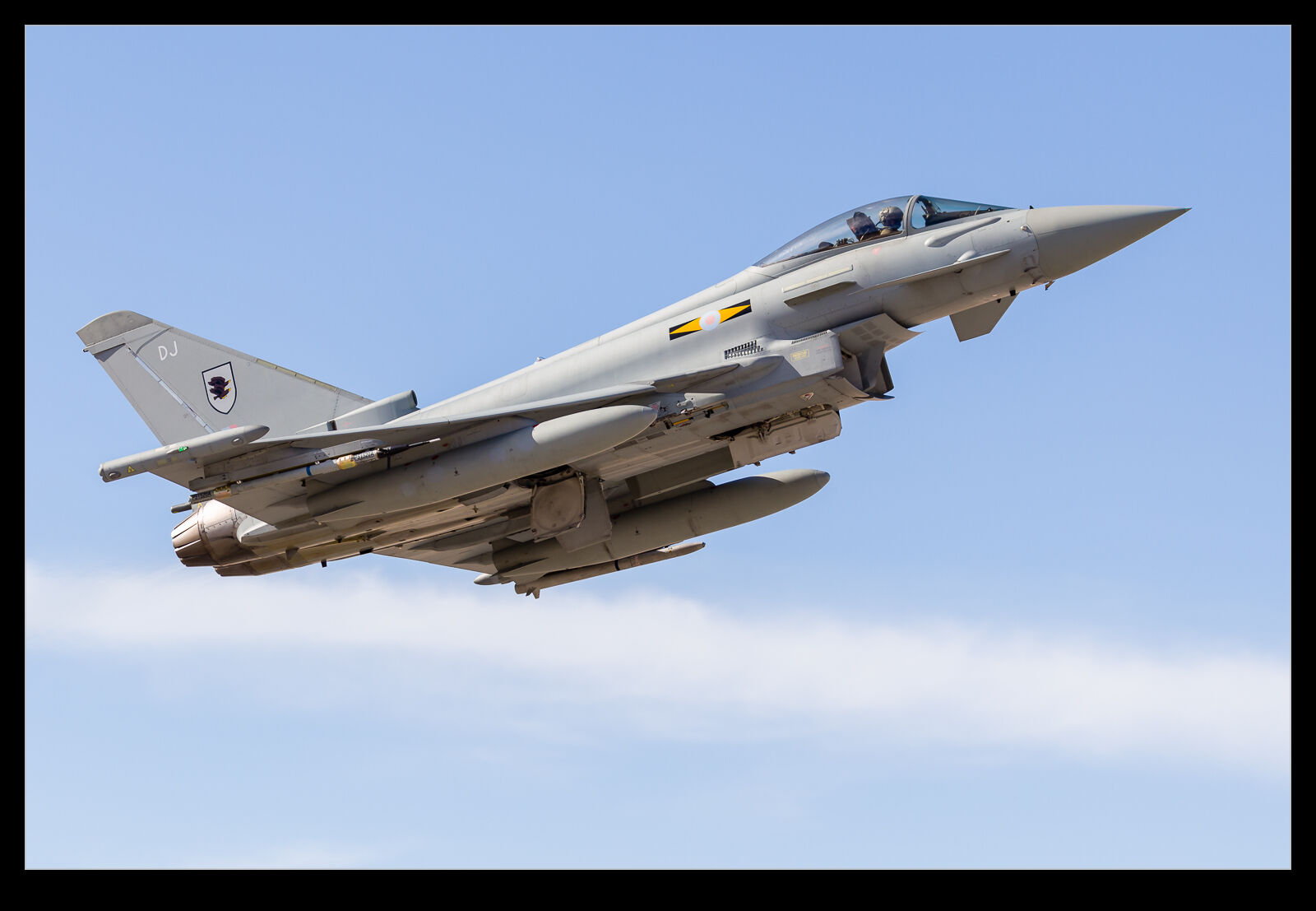 The Brits were at Red Flag in numbers too for 16-1. An E-3D Sentry was part of the AWACS fleet while a C-130J Hercules launched each day I was there. Judging by the dust and dirt on the underside, they were landing on rough strips out on the ranges during their missions. However, the thing I was most looking forward to seeing was the Typhoon. The RAF brought eight jets from 3 and 11 Squadrons. Most days six of them launched.
The Brits were at Red Flag in numbers too for 16-1. An E-3D Sentry was part of the AWACS fleet while a C-130J Hercules launched each day I was there. Judging by the dust and dirt on the underside, they were landing on rough strips out on the ranges during their missions. However, the thing I was most looking forward to seeing was the Typhoon. The RAF brought eight jets from 3 and 11 Squadrons. Most days six of them launched.
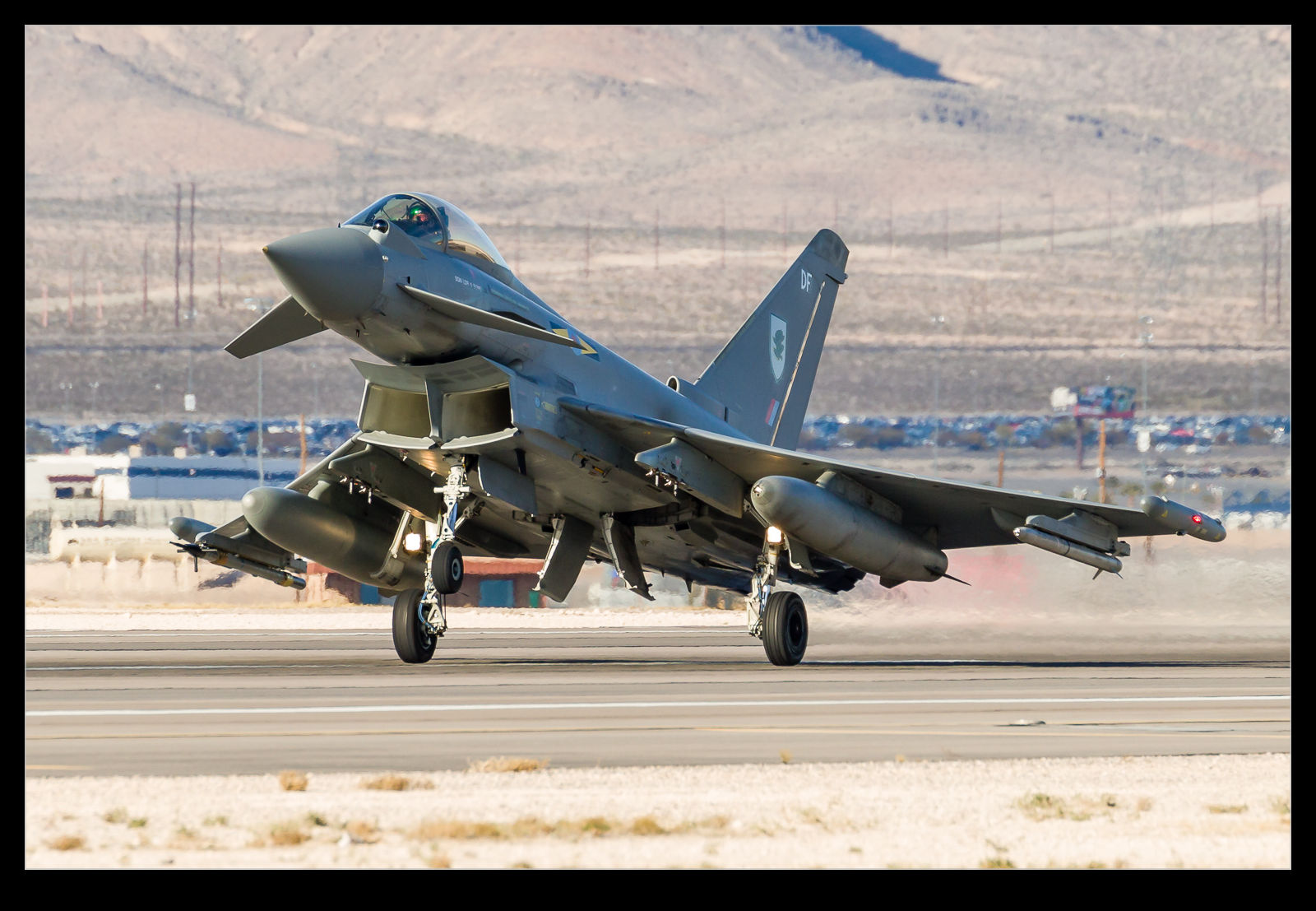 In my youth, I worked on what was to become the Typhoon in my BAE days. I was an aerodynamicist looking at airframe loading and the possible flight envelope for the first flight. I was not looking forward to the job when I was given it but working on loads turned out to be a great task and taught me a lot about structural limits, flight controls and the process for expanding the flight envelope. A mentor of mine had told me it sounded dull but was very valuable and he was spot on. I guess he is a smart guy because he has gone on to be rather successful in the company!
In my youth, I worked on what was to become the Typhoon in my BAE days. I was an aerodynamicist looking at airframe loading and the possible flight envelope for the first flight. I was not looking forward to the job when I was given it but working on loads turned out to be a great task and taught me a lot about structural limits, flight controls and the process for expanding the flight envelope. A mentor of mine had told me it sounded dull but was very valuable and he was spot on. I guess he is a smart guy because he has gone on to be rather successful in the company!
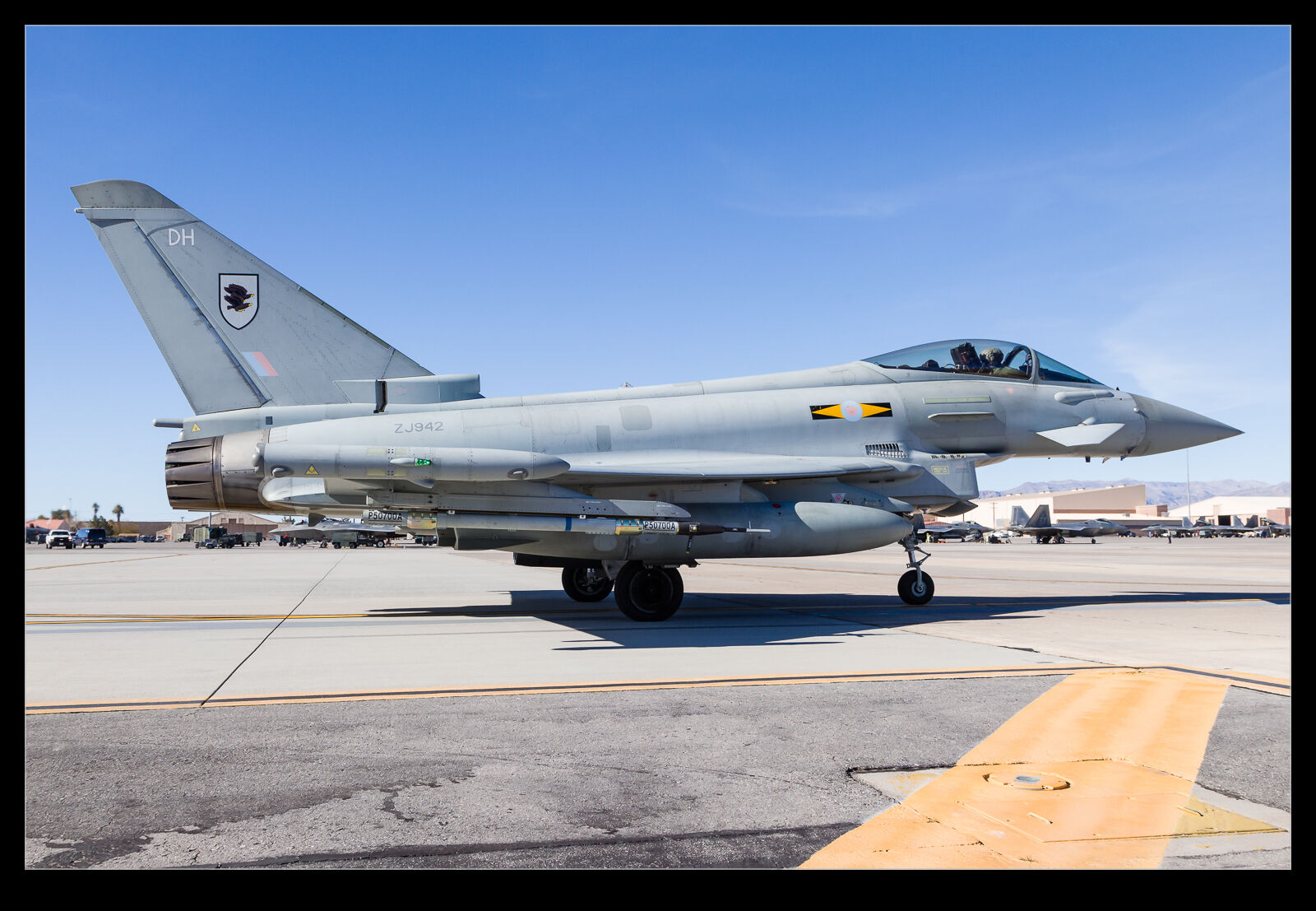 Back on topic, the Typhoon is something I am very pleased to have worked on. Getting to see them in action is great. The launches when we were out by the runways were great. When we were by the EOR, we were directly across from the ramp that the Typhoons were using so I managed to see them crewing up for the launch. Then, of course, they had to come right by us as they taxied out. I know it was a long time ago but I can’t help but still have a soft spot for them when I see them in use.
Back on topic, the Typhoon is something I am very pleased to have worked on. Getting to see them in action is great. The launches when we were out by the runways were great. When we were by the EOR, we were directly across from the ramp that the Typhoons were using so I managed to see them crewing up for the launch. Then, of course, they had to come right by us as they taxied out. I know it was a long time ago but I can’t help but still have a soft spot for them when I see them in use.
- Two Royal Air Force Typhoon fighters make final checks on the ramp at Nellis AFB Las Vegas Nevada as part of a Red Flag mission.
- A Royal Air Force Typhoon fighter on final approach to Nellis AFB Las Vegas Nevada as part of a Red Flag mission.
- Two Royal Air Force Typhoon fighters await takeoff clearance at Nellis AFB Las Vegas Nevada as part of a Red Flag mission.
- A Royal Air Force Eurofighter Typhoon turns on to final approach at Nellis AFB Las Vegas Nevada after a Red Flag mission.
- A Royal Air Force Eurofighter Typhoon turns on to final approach at Nellis AFB Las Vegas Nevada after a Red Flag mission.
Two Aborts in One Launch
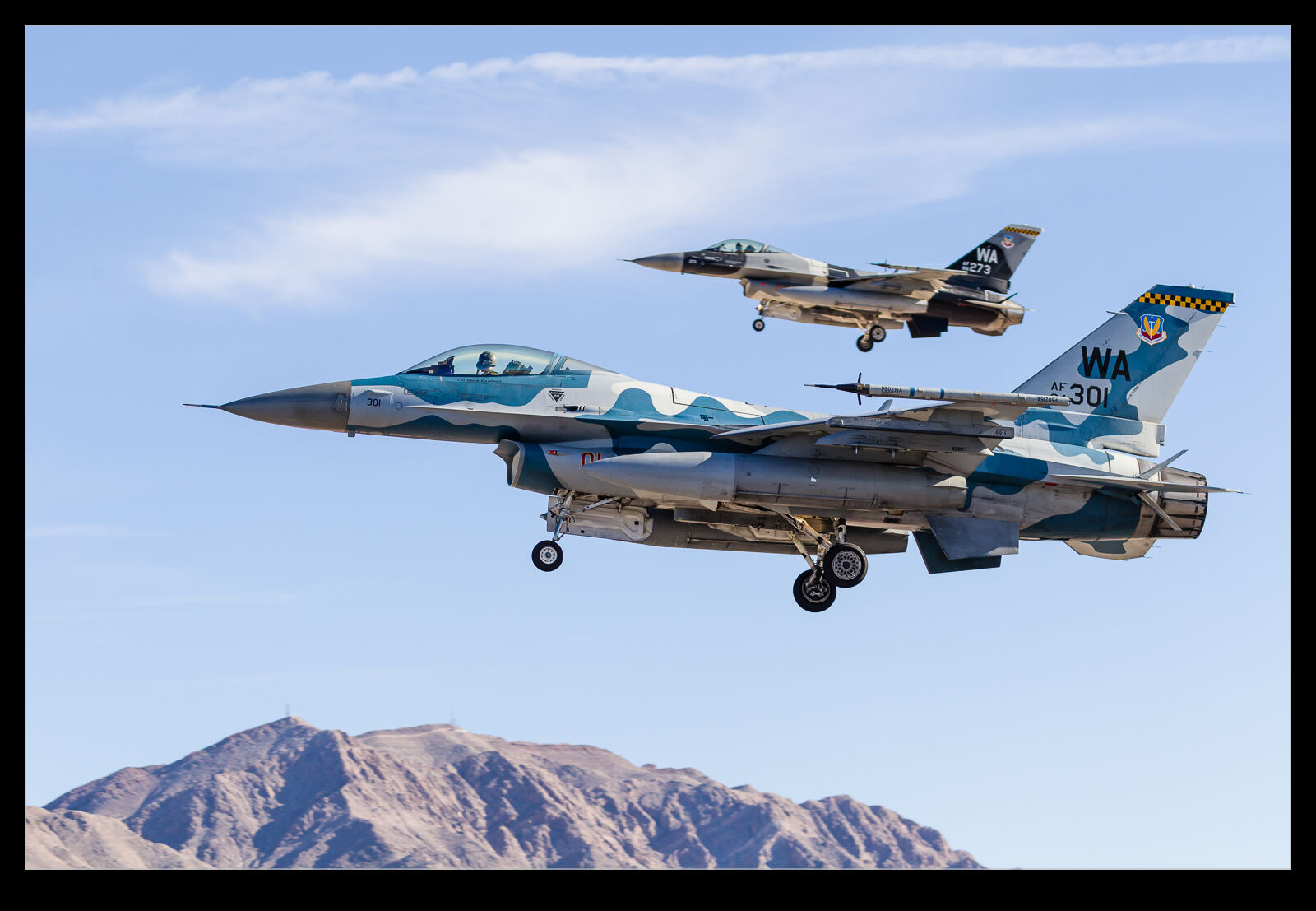 Red Flag missions are two periods of intense activity with an intermediate phase of nothing much. The launch develops in to a steady stream of jets taking off as everyone gets airborne for their phase of the mission. They have been preceded by the tankers and AWACS who are setting up to manage the throughout of the smaller jets. Once everyone is gone, the simulated war is occurring somewhere else. Then, everything starts to come back with a steady stream of the jets breaking overhead and landing before the tankers and AWACS come back at the end.
Red Flag missions are two periods of intense activity with an intermediate phase of nothing much. The launch develops in to a steady stream of jets taking off as everyone gets airborne for their phase of the mission. They have been preceded by the tankers and AWACS who are setting up to manage the throughout of the smaller jets. Once everyone is gone, the simulated war is occurring somewhere else. Then, everything starts to come back with a steady stream of the jets breaking overhead and landing before the tankers and AWACS come back at the end.
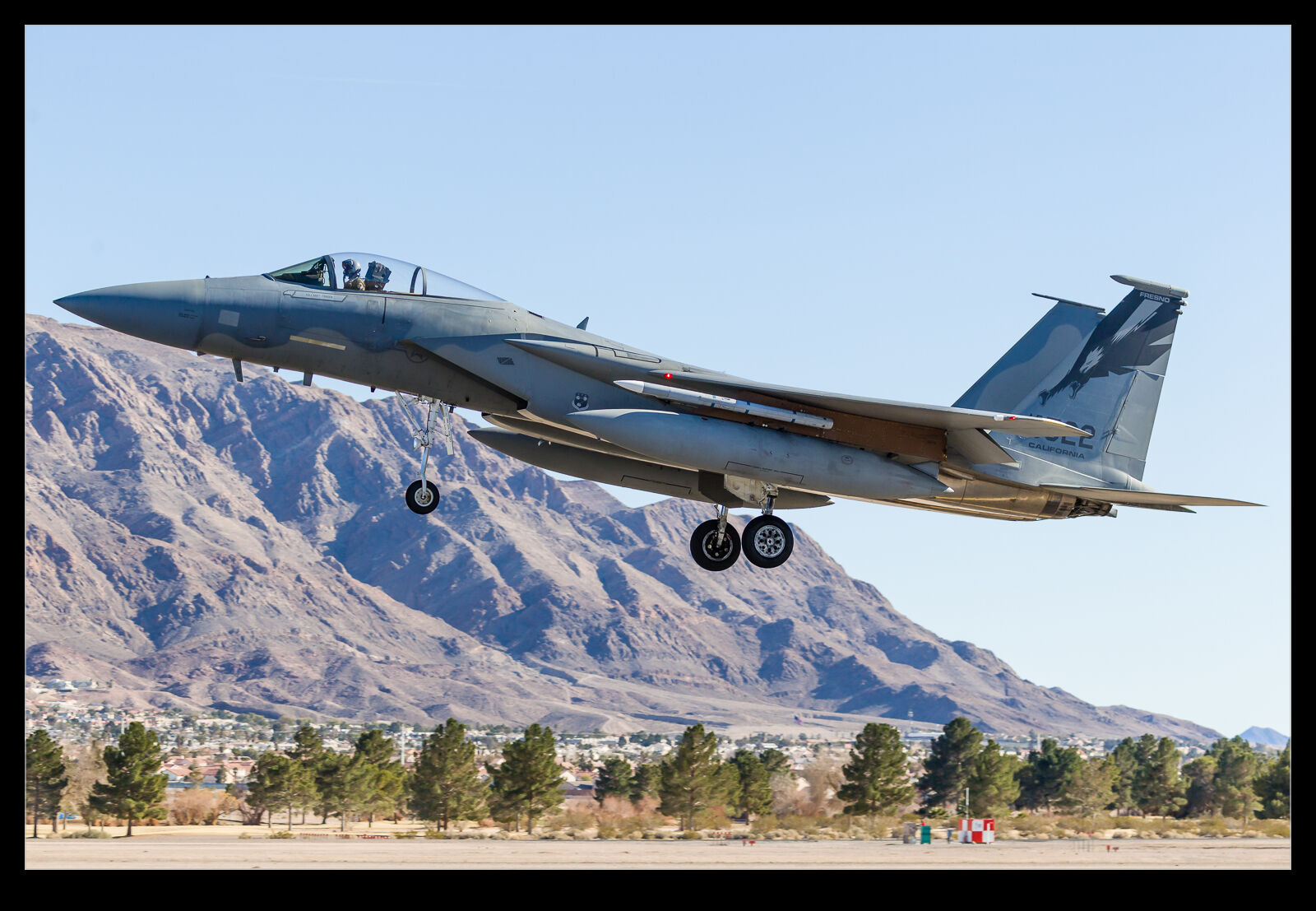 After the majority of the launch, we were at the EOR watching the occasional straggler go out or some based planes fitting in. Then we got a pair of F-15s come back. They flew an approach with one jet on the glide path while the other was clearly shepherding them in. The F-15 landed without incident and the wingman powered away to rejoin the flight. Some fire trucks rolled but everything seemed to be under control.
After the majority of the launch, we were at the EOR watching the occasional straggler go out or some based planes fitting in. Then we got a pair of F-15s come back. They flew an approach with one jet on the glide path while the other was clearly shepherding them in. The F-15 landed without incident and the wingman powered away to rejoin the flight. Some fire trucks rolled but everything seemed to be under control.
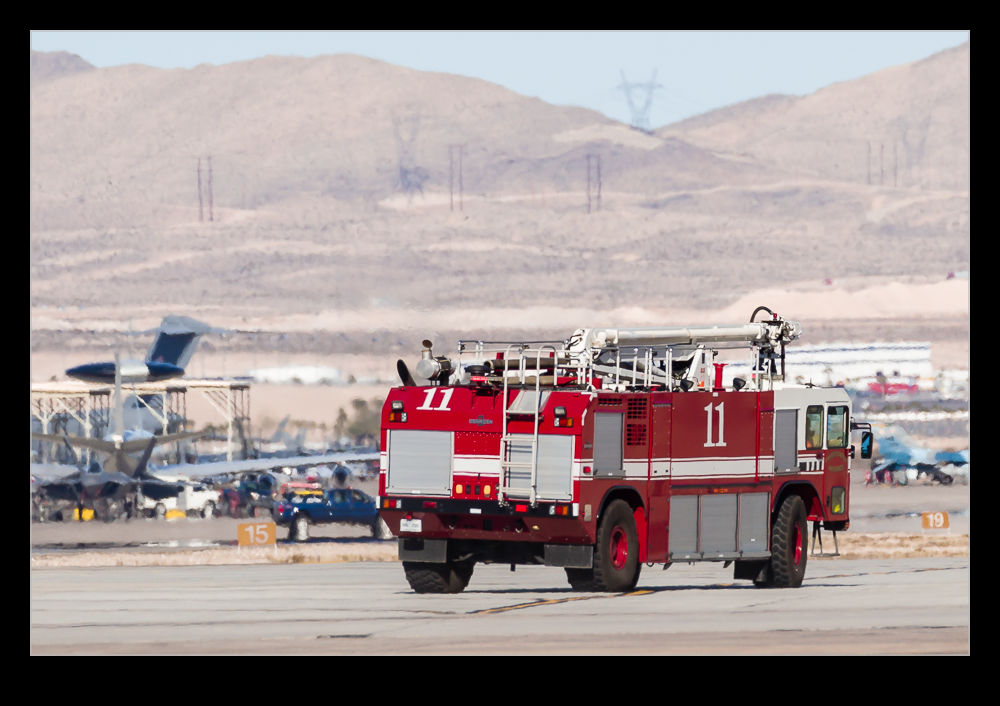 Not long after we had stopped discussing this, a pair of aggressor F-16s came into view. The same procedure and one landed while the other shadowed them down the approach. With a safe touchdown, power on and back to the battle. Technical issues are not uncommon but I was surprised to get two in close succession. Everyone seems to have handled them appropriately and they appear to have ended without further incident.
Not long after we had stopped discussing this, a pair of aggressor F-16s came into view. The same procedure and one landed while the other shadowed them down the approach. With a safe touchdown, power on and back to the battle. Technical issues are not uncommon but I was surprised to get two in close succession. Everyone seems to have handled them appropriately and they appear to have ended without further incident.
Red Flag 16-1 Launch
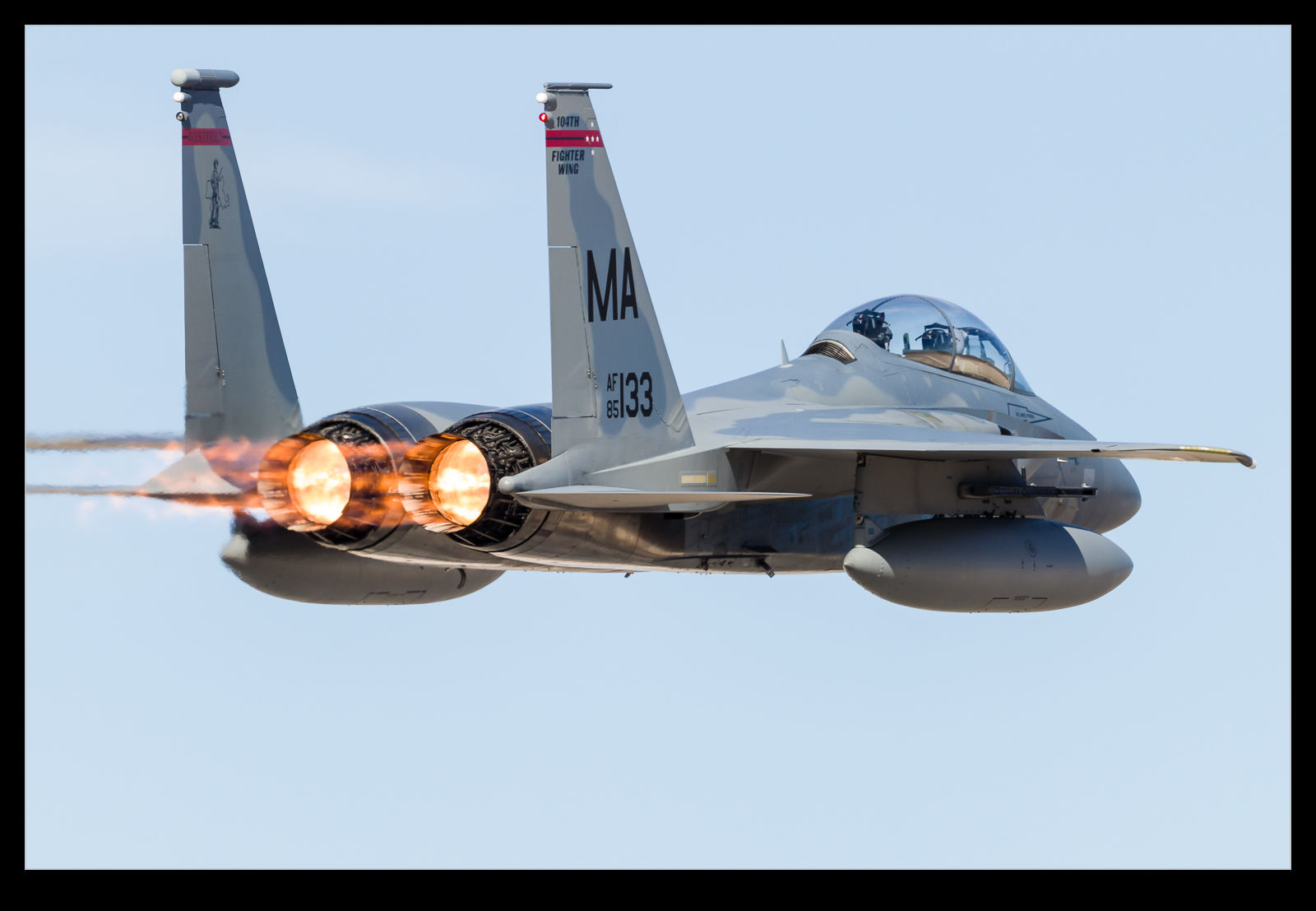 I might not be as regular at Red Flag exercises as some of my colleagues but I do try and get to at least one a year. The different events have differing levels of appeal. The winter means less hot weather but the sun angles can be very tricky. Sometimes there is a lack of overseas participation. In the case of 16-1, there was a planned attendance from the Royal Australian Air Force with a variety of types as well as the RAF bringing Typhoons and a Hercules. My UK friends would be interested in the other participants but I like to see the RAF stuff because I don’t normally see it.
I might not be as regular at Red Flag exercises as some of my colleagues but I do try and get to at least one a year. The different events have differing levels of appeal. The winter means less hot weather but the sun angles can be very tricky. Sometimes there is a lack of overseas participation. In the case of 16-1, there was a planned attendance from the Royal Australian Air Force with a variety of types as well as the RAF bringing Typhoons and a Hercules. My UK friends would be interested in the other participants but I like to see the RAF stuff because I don’t normally see it.
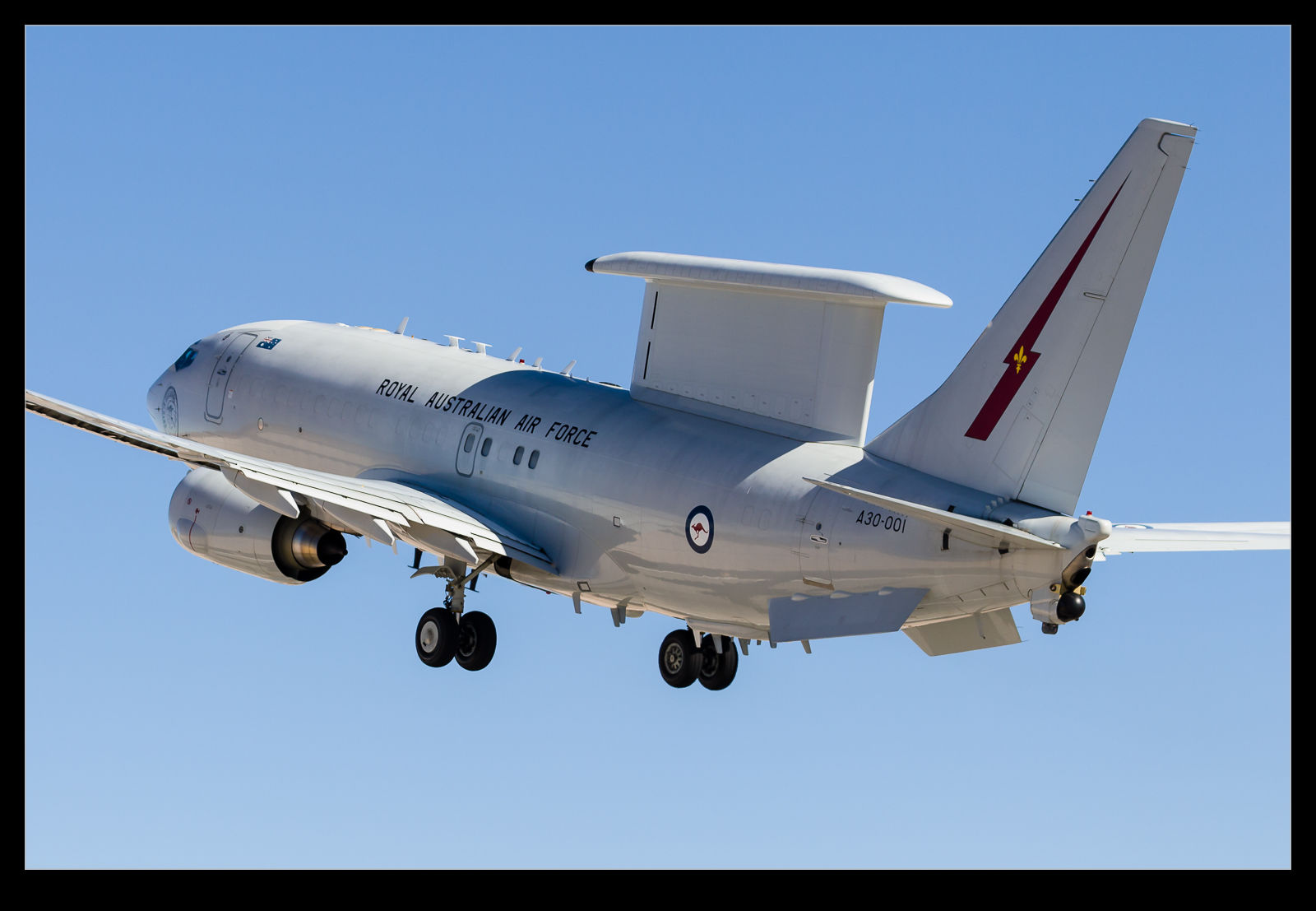 Launches follow a pretty regular pattern. The AEW aircraft gets up first followed by the tankers. Then the bombers head up and the rest of the aircraft stream out. They tend to launch to the northeast and recover in the opposite direction. The launch means a lot of backlighting of the aircraft. There have been times when they launch to the southwest but, sadly, I have never been there for one of those. Recoveries are into the light usually which helps. Unfortunately, some changes in the procedures meant that we did not get a full recovery on base.
Launches follow a pretty regular pattern. The AEW aircraft gets up first followed by the tankers. Then the bombers head up and the rest of the aircraft stream out. They tend to launch to the northeast and recover in the opposite direction. The launch means a lot of backlighting of the aircraft. There have been times when they launch to the southwest but, sadly, I have never been there for one of those. Recoveries are into the light usually which helps. Unfortunately, some changes in the procedures meant that we did not get a full recovery on base.
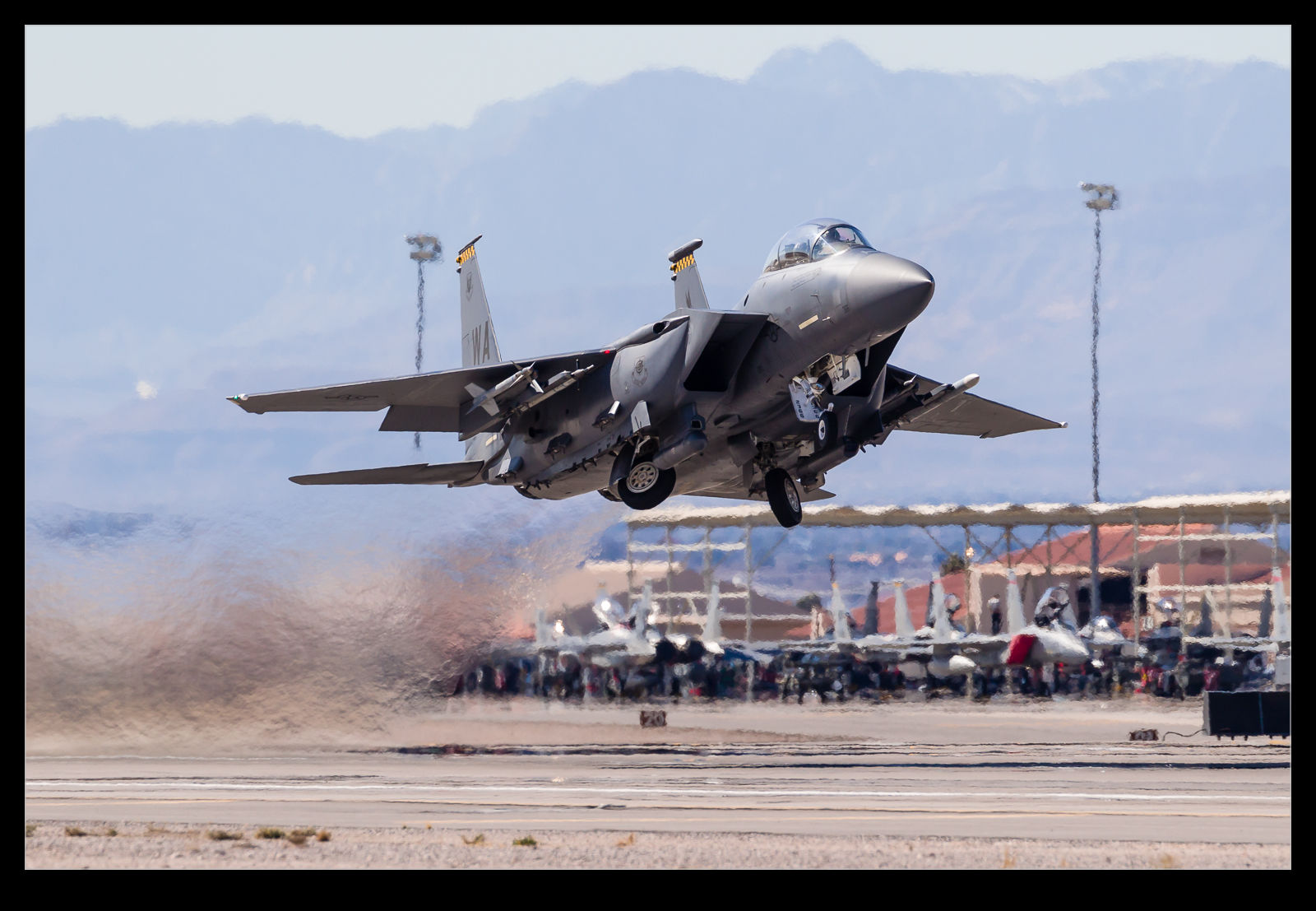 We were quite lucky as the following day the winds picked up and the recoveries were made in the same direction as the launch which would not have made for good photo opportunities. The launch is always an interesting challenge. They launch from both runways so you find yourself deciding which side is going next and scurrying back and forth. You also have some aircraft on the banned list so you have to make sure you know what each plane is before you shoot it. This can involve being able to shoot one unit’s aircraft of a given type but not another’s. Still, it’s better than being at work.
We were quite lucky as the following day the winds picked up and the recoveries were made in the same direction as the launch which would not have made for good photo opportunities. The launch is always an interesting challenge. They launch from both runways so you find yourself deciding which side is going next and scurrying back and forth. You also have some aircraft on the banned list so you have to make sure you know what each plane is before you shoot it. This can involve being able to shoot one unit’s aircraft of a given type but not another’s. Still, it’s better than being at work.
